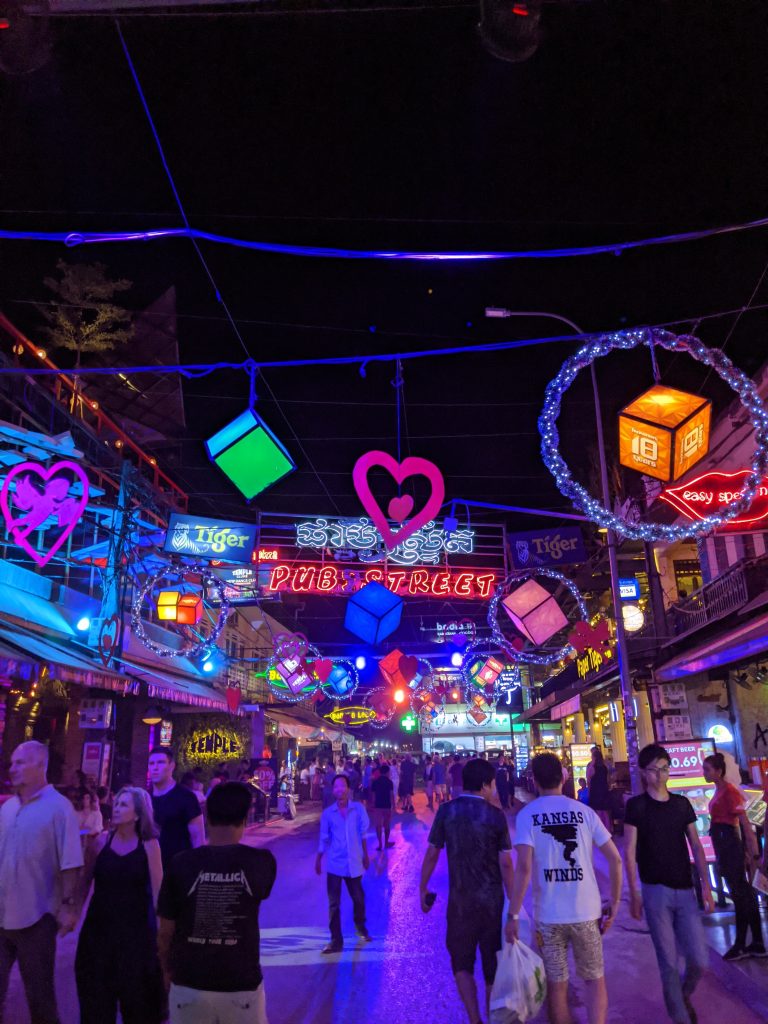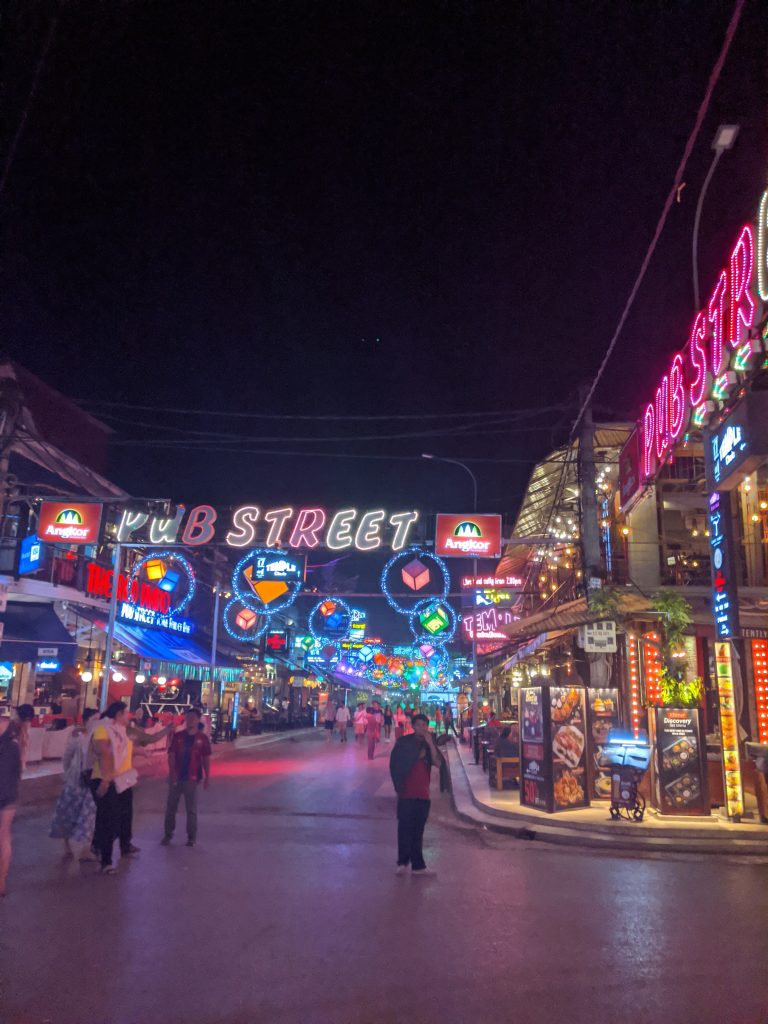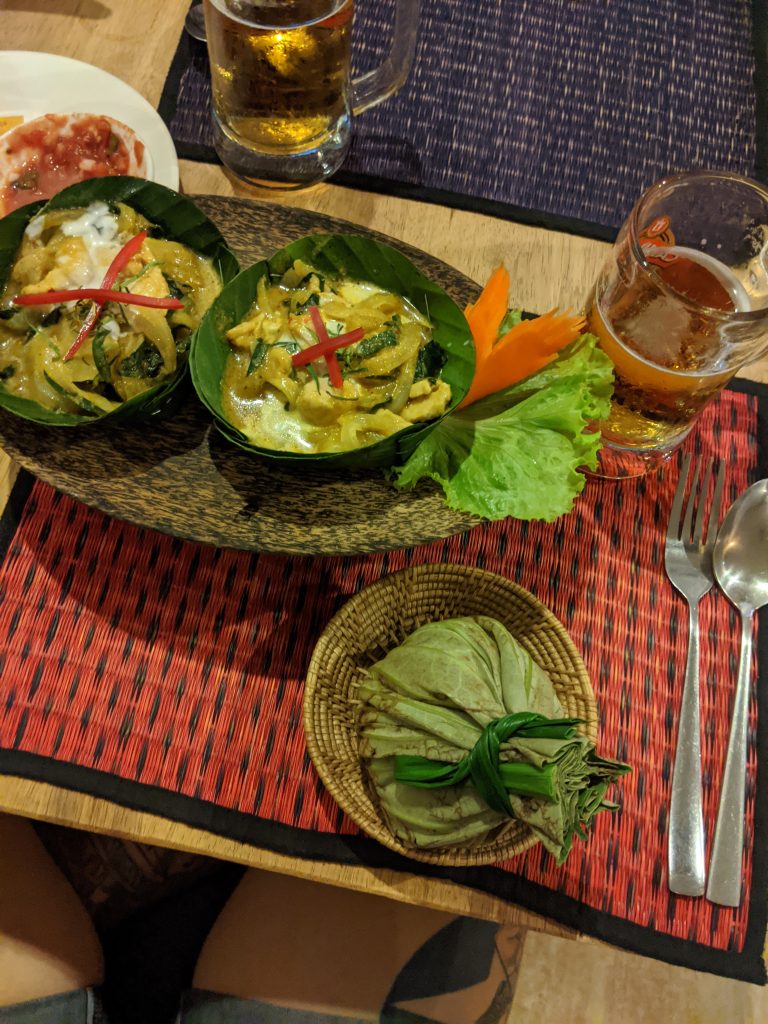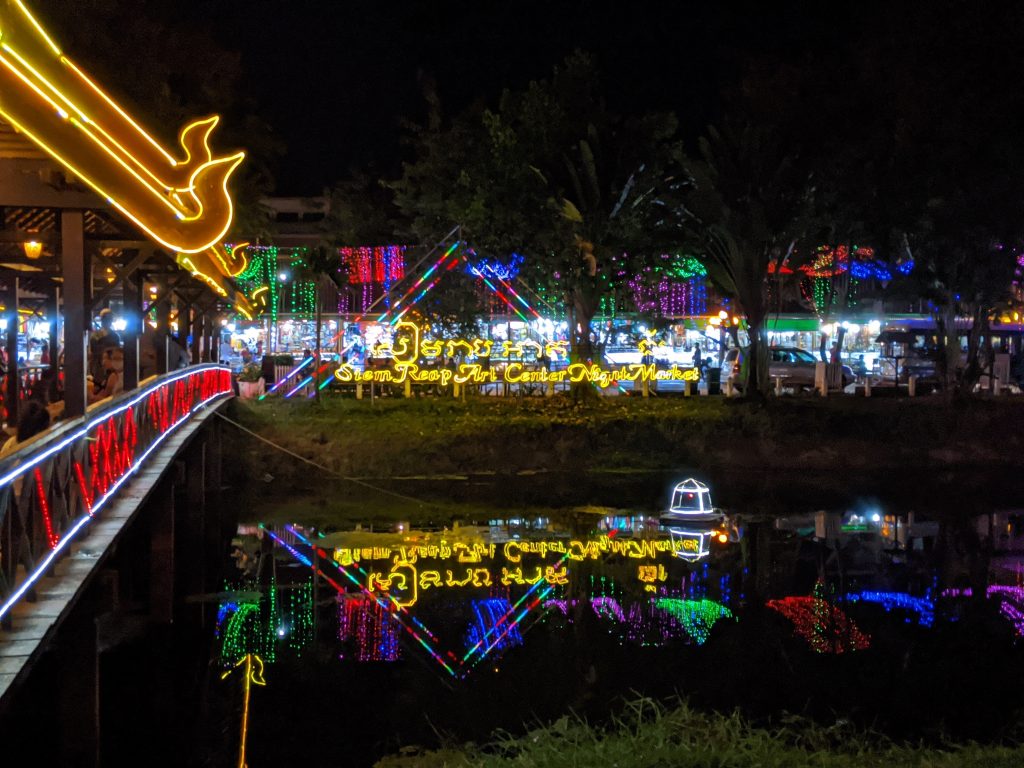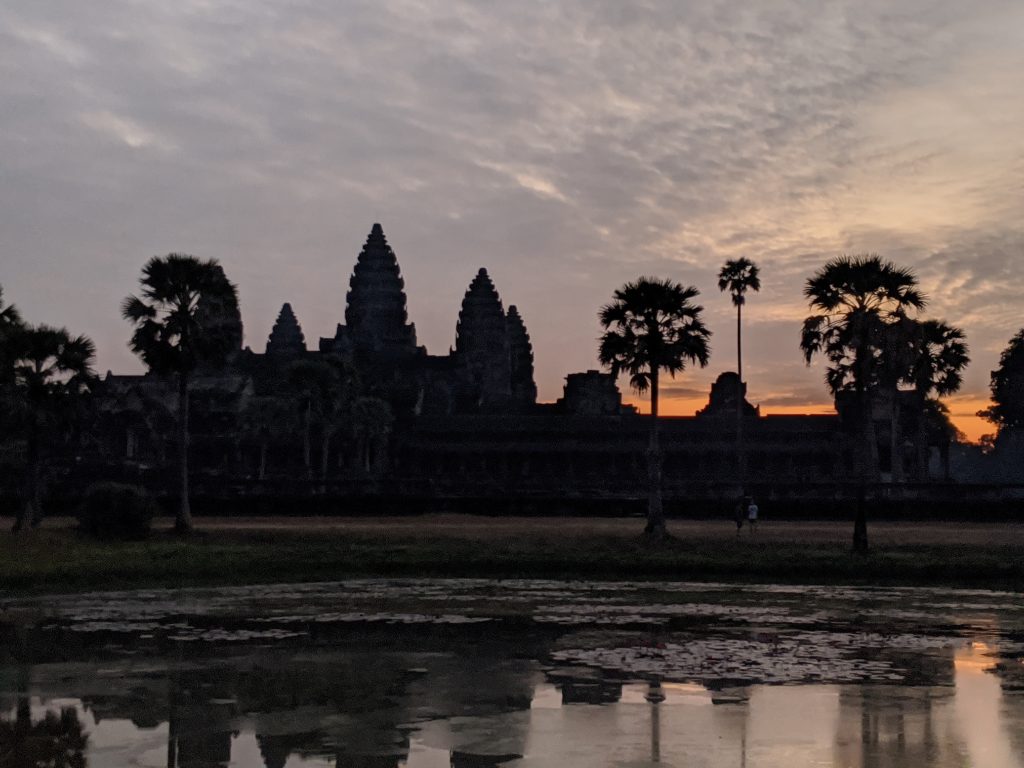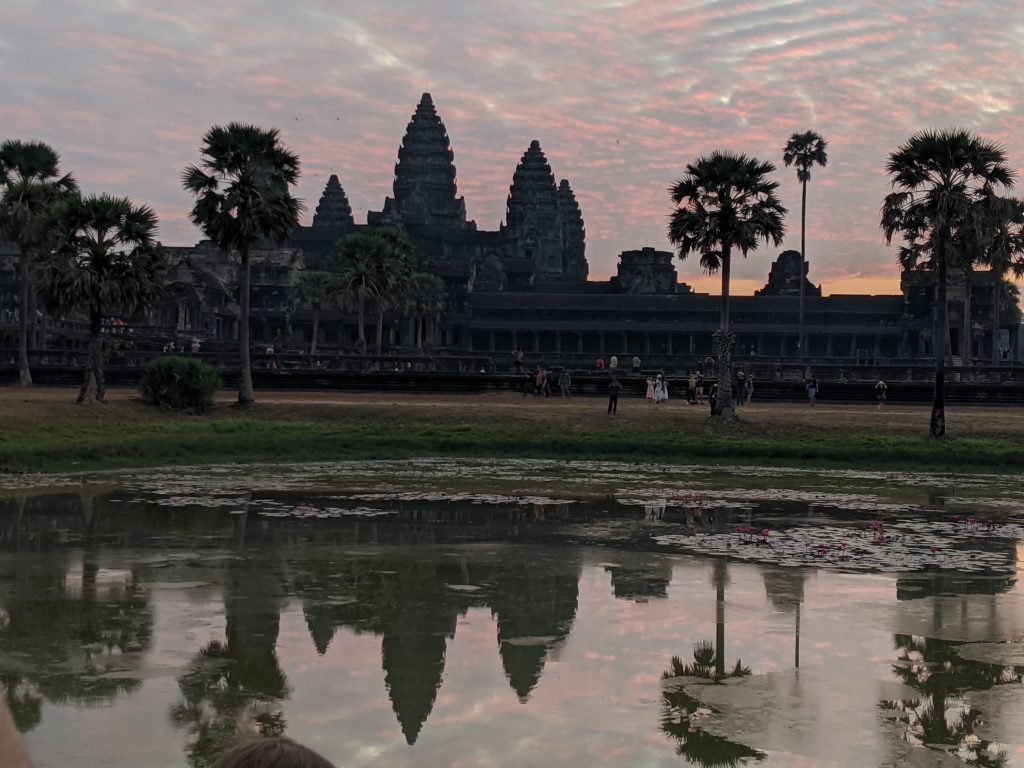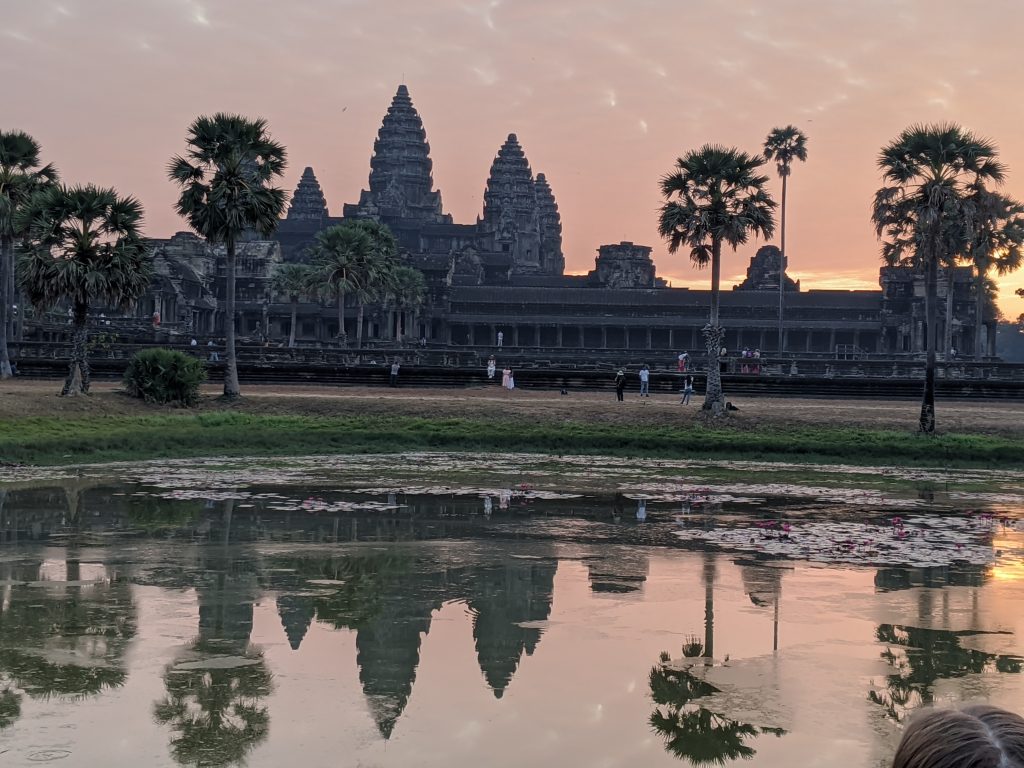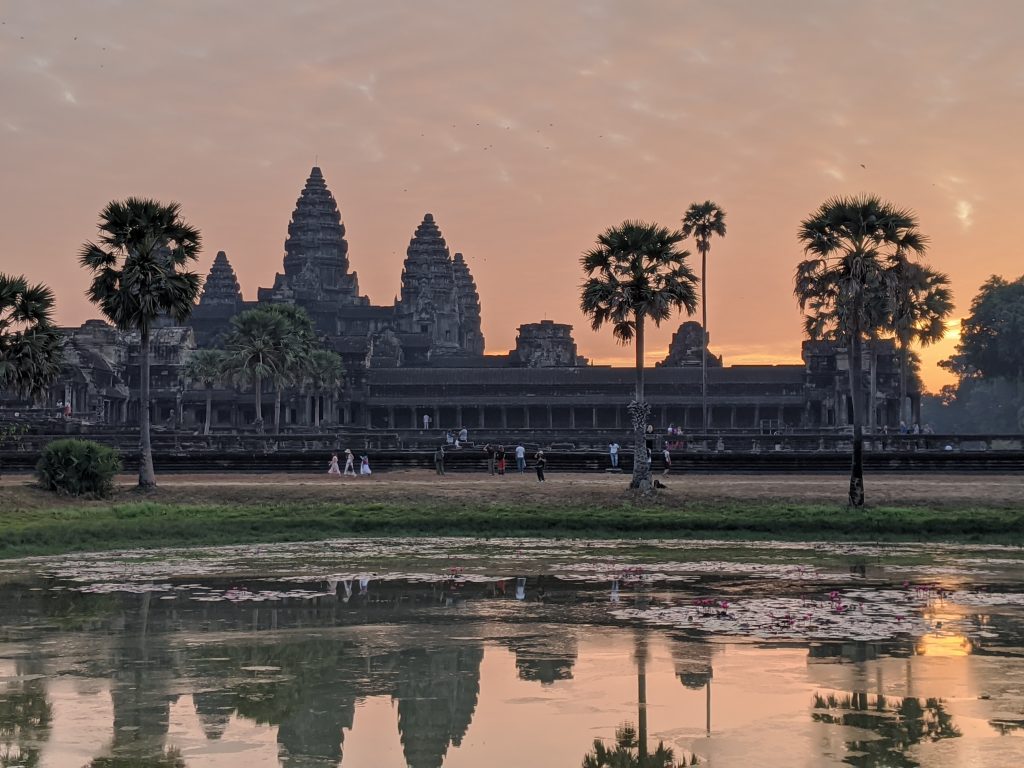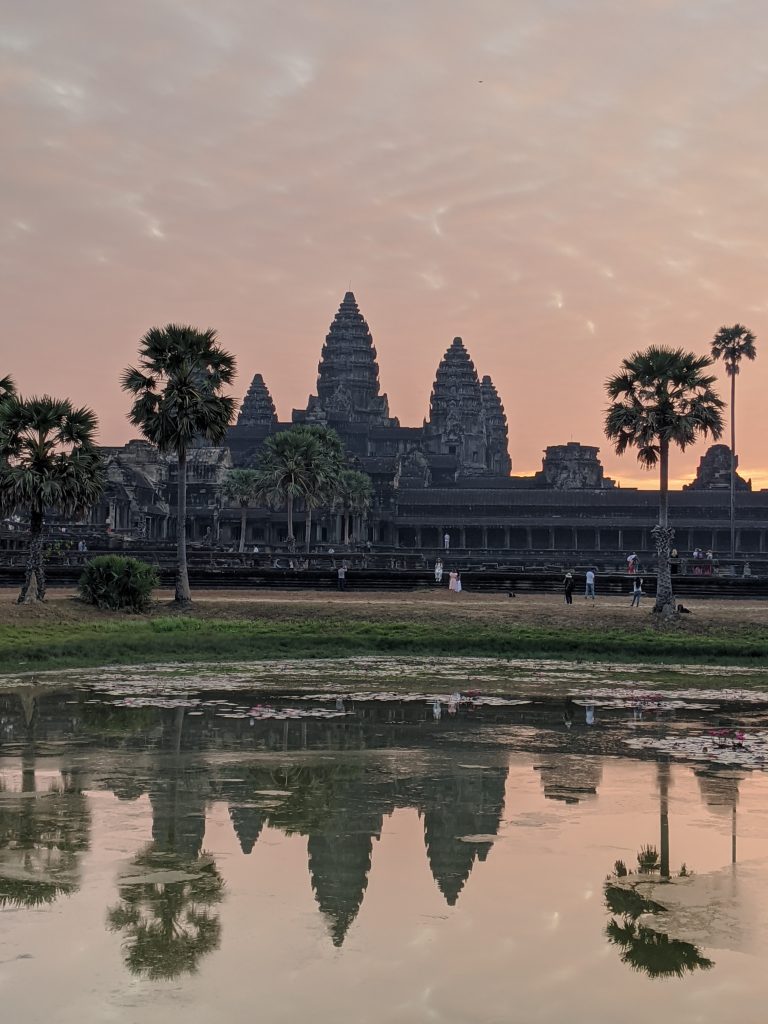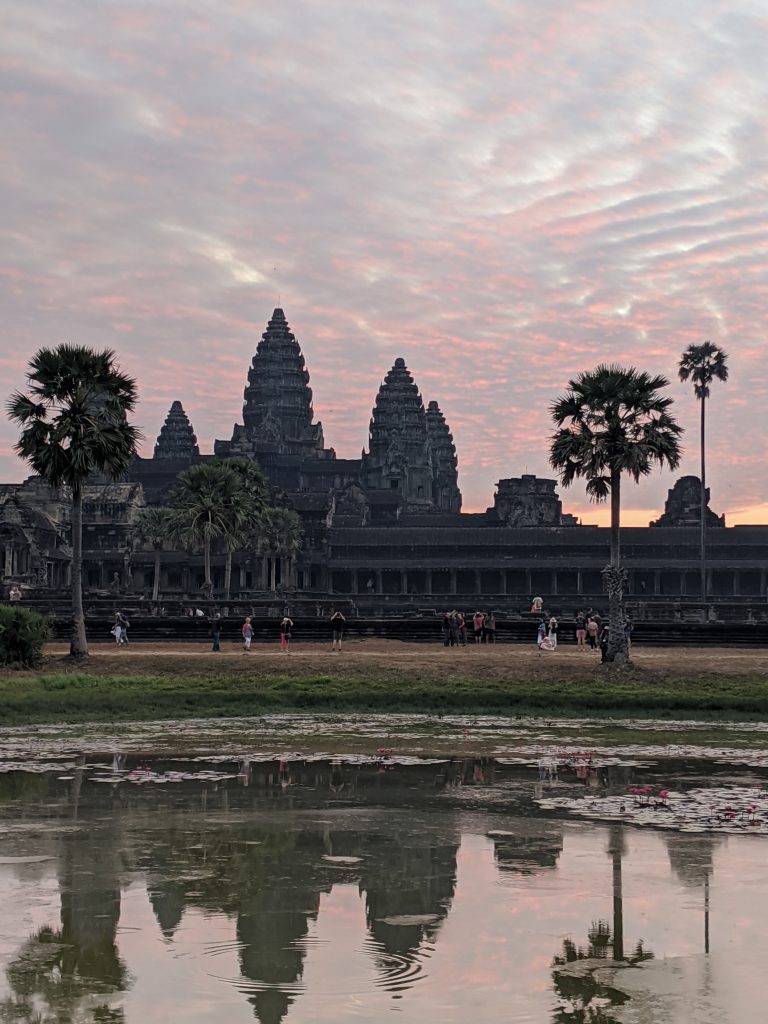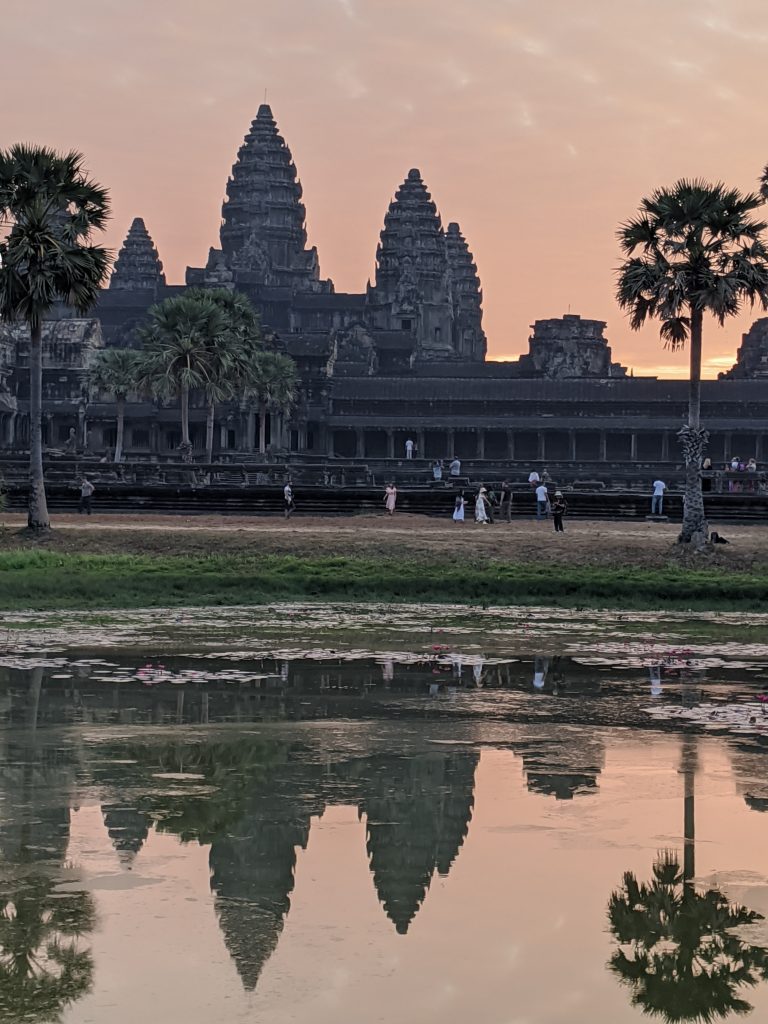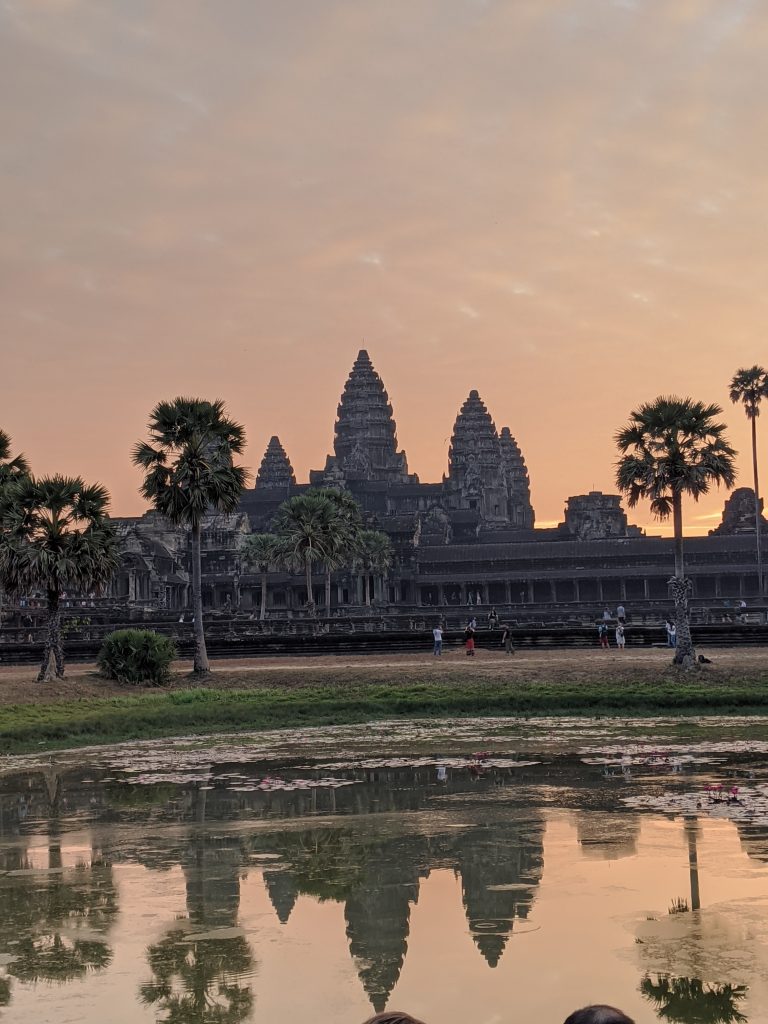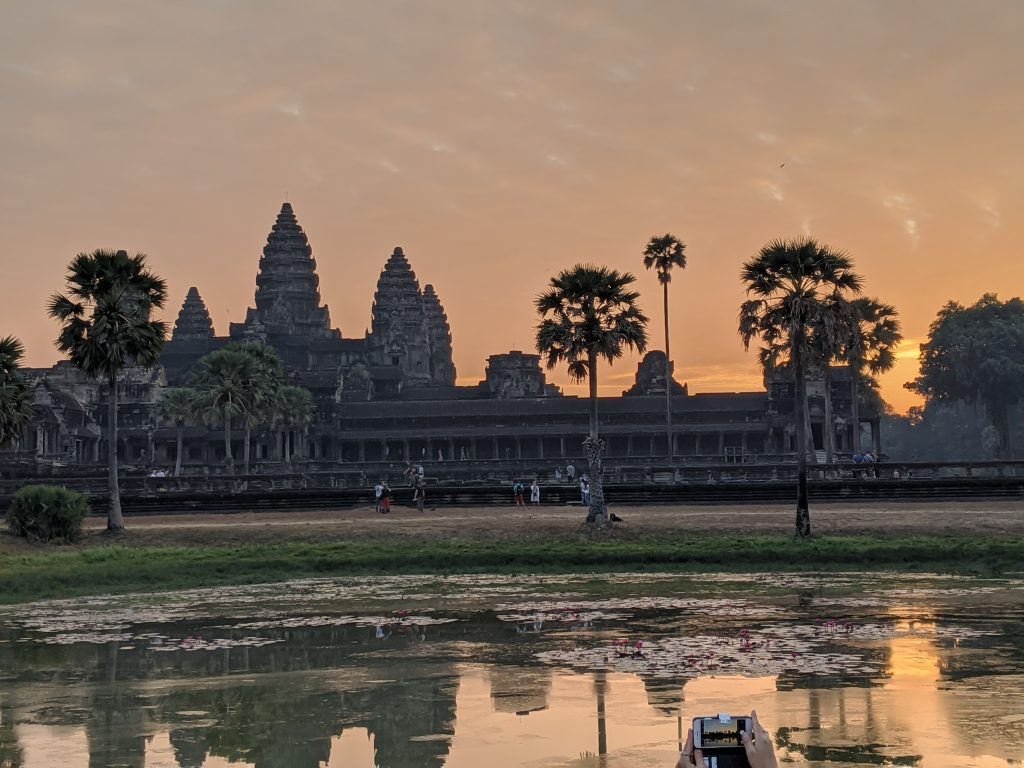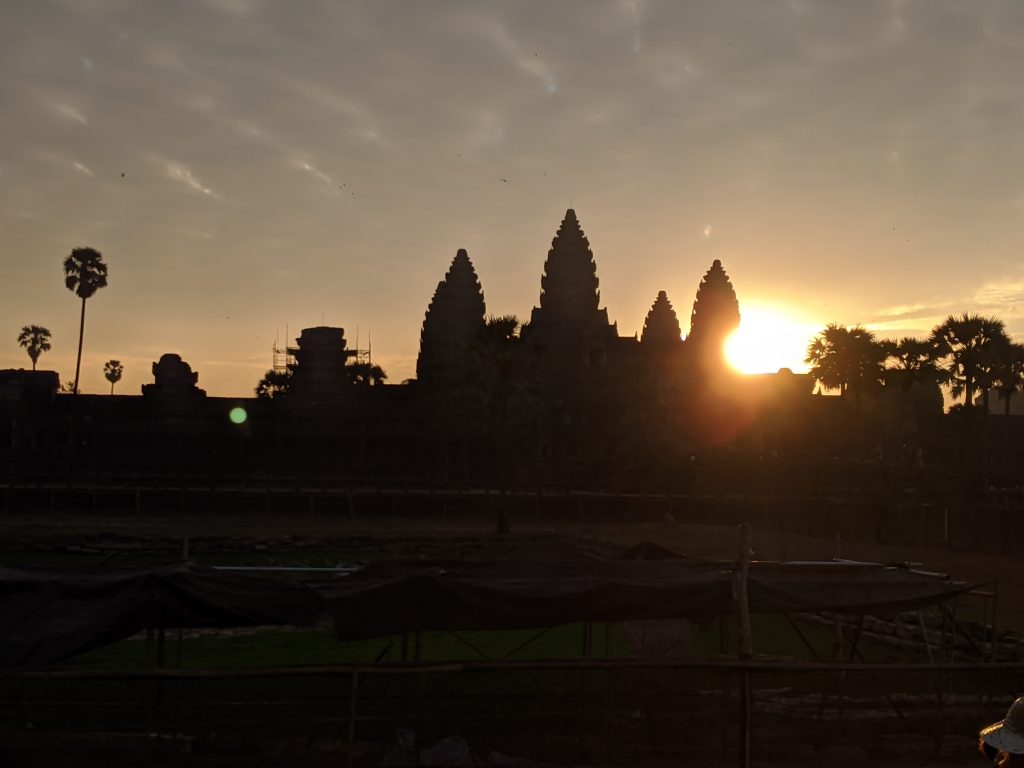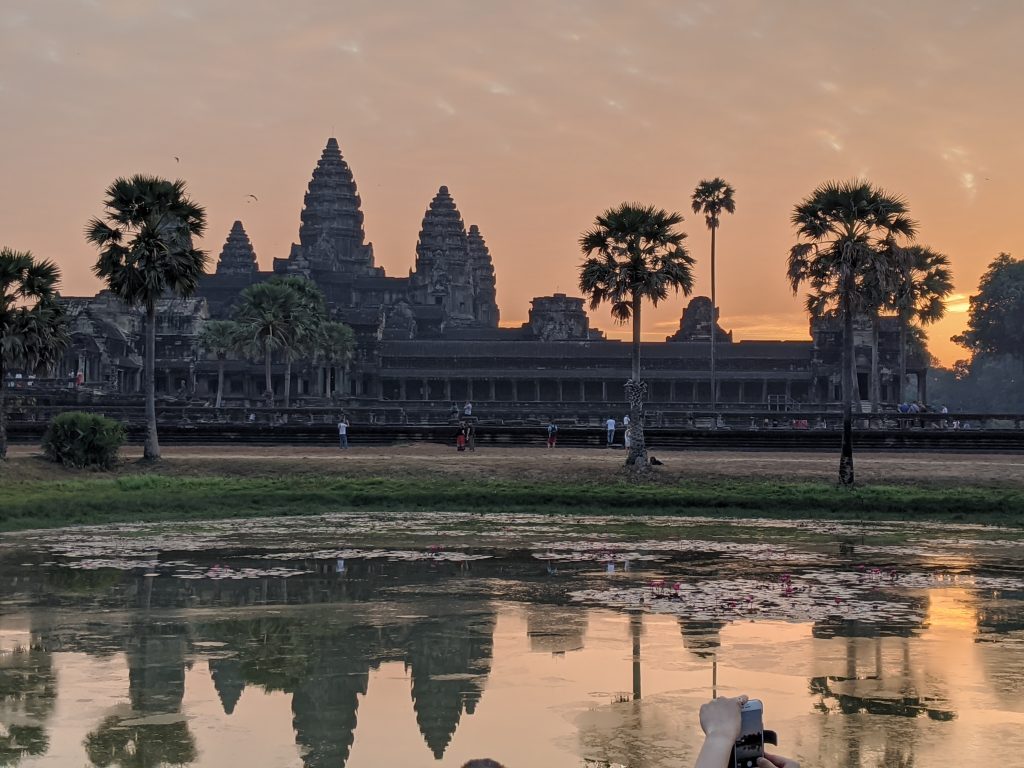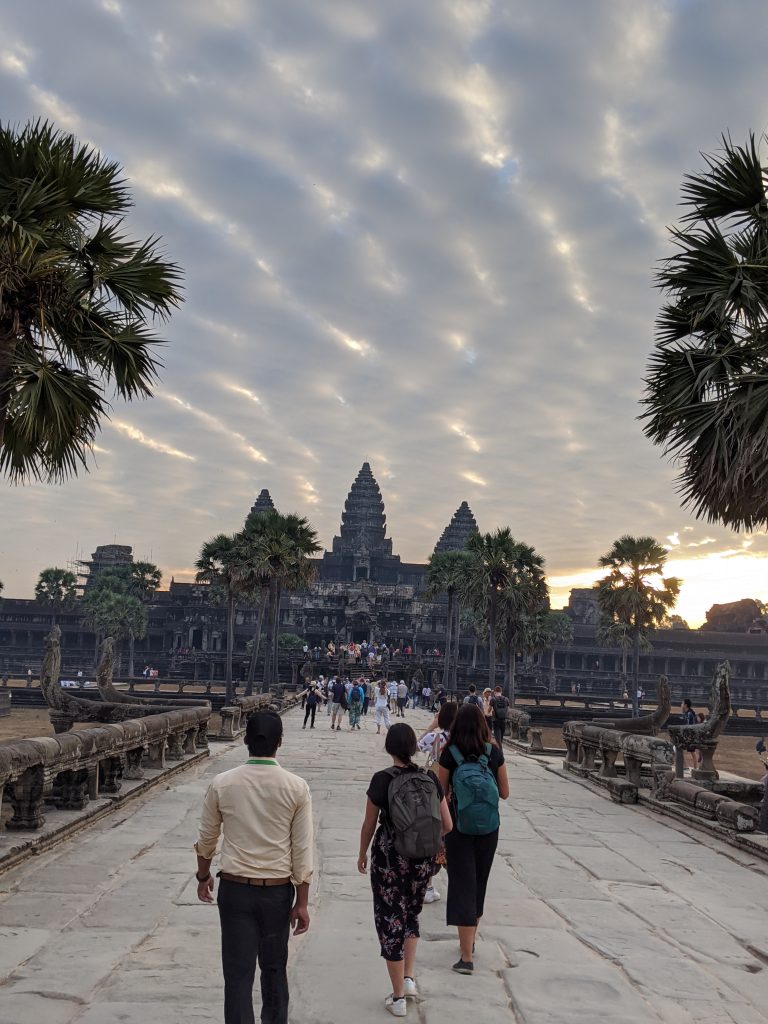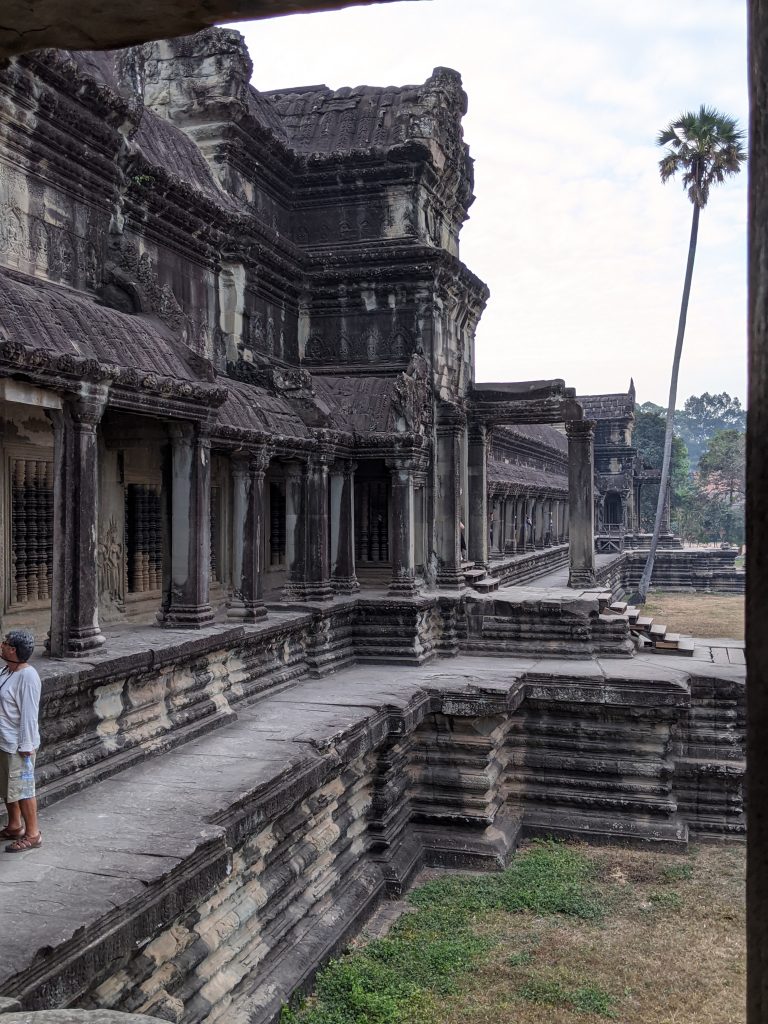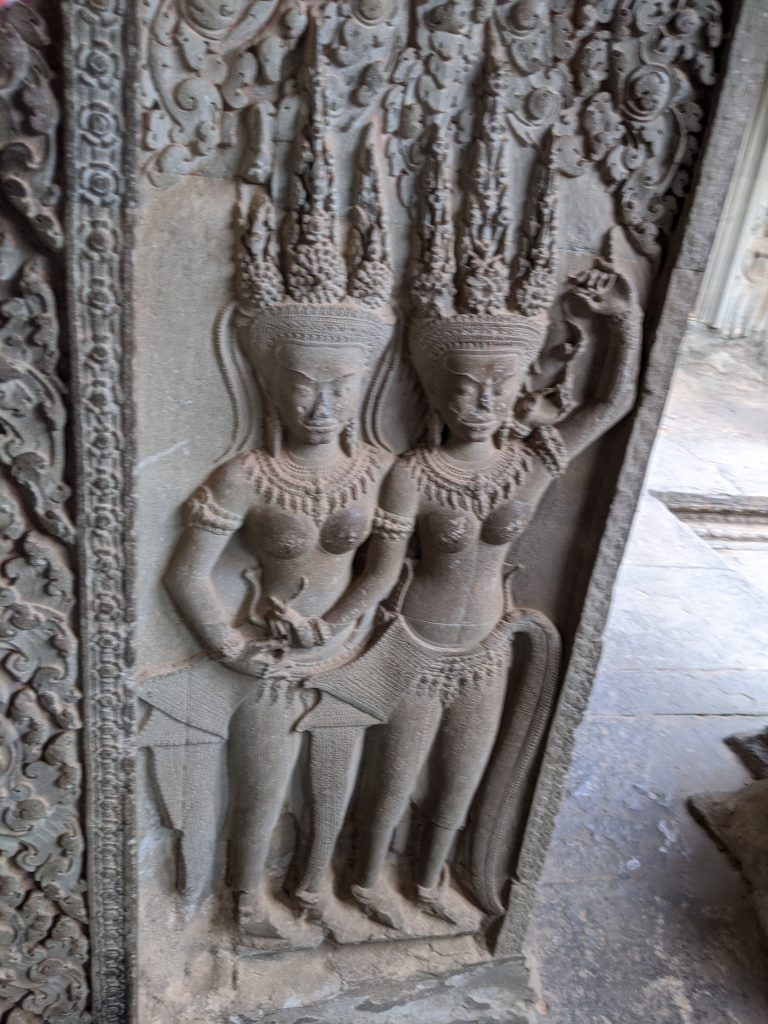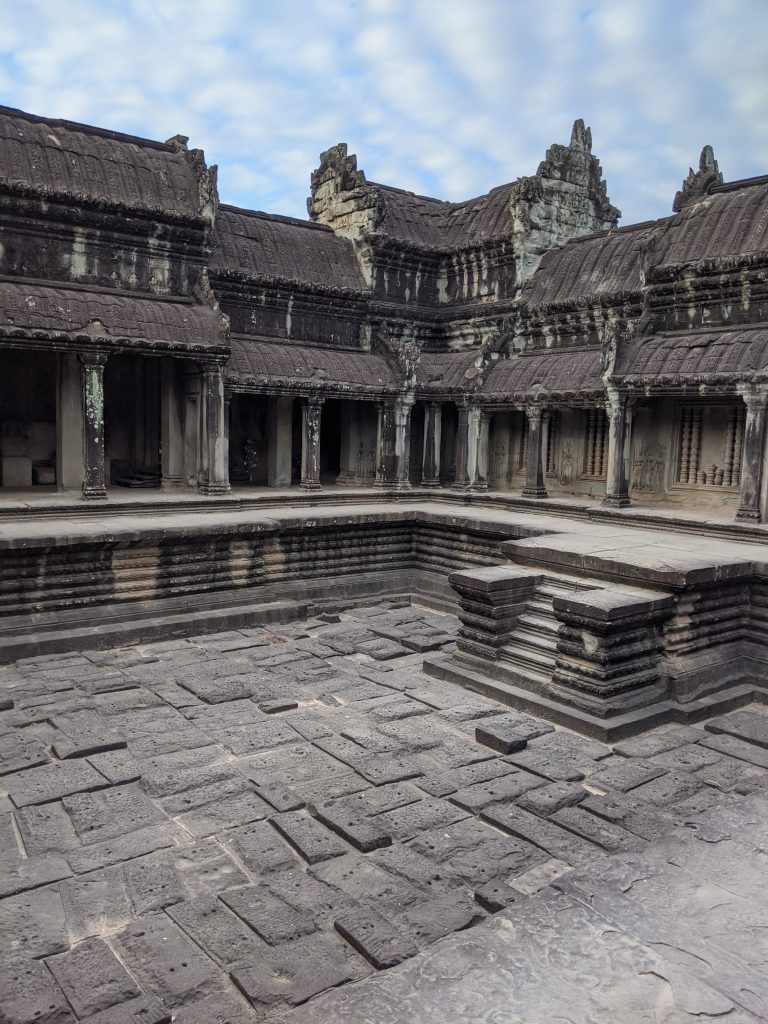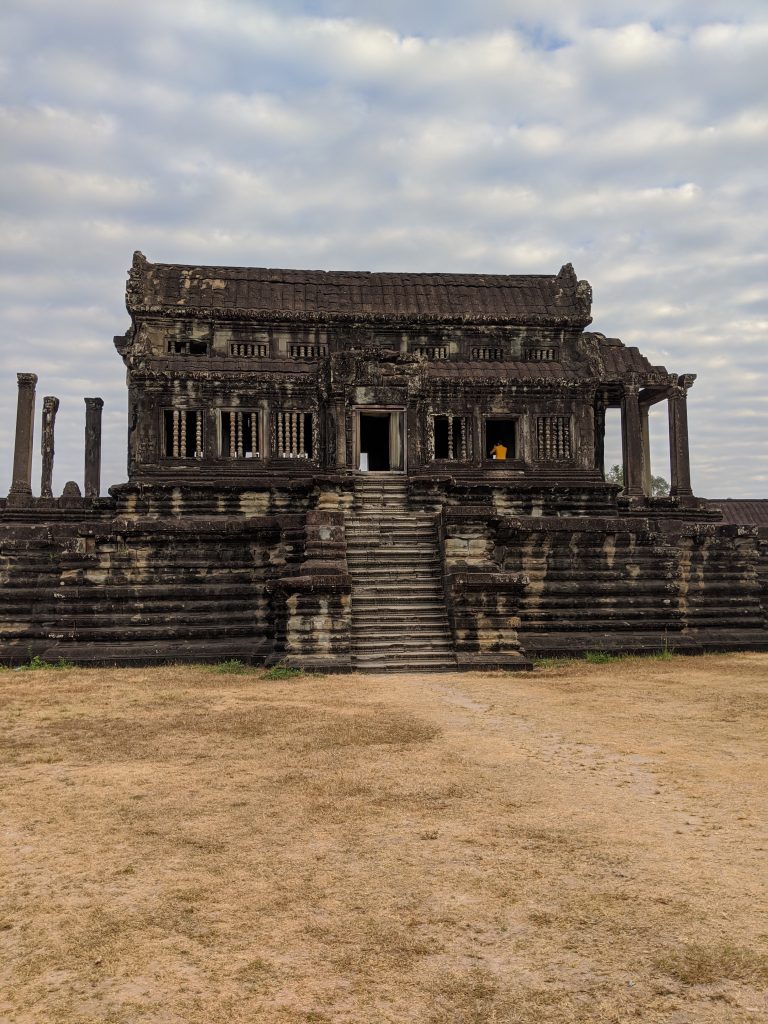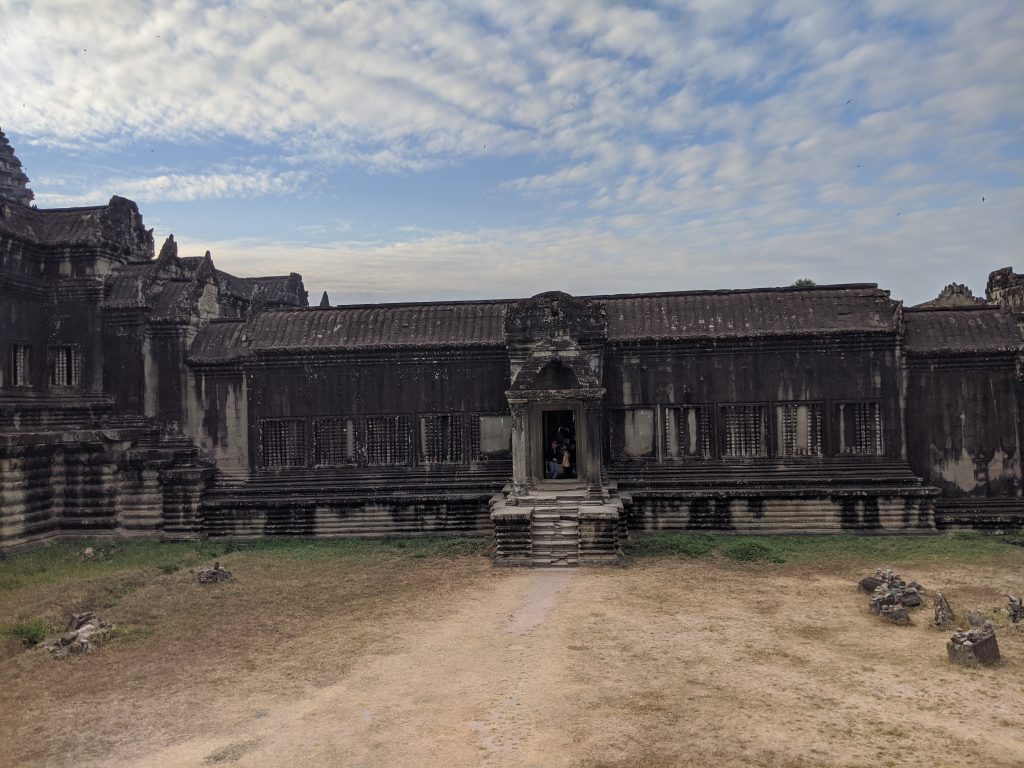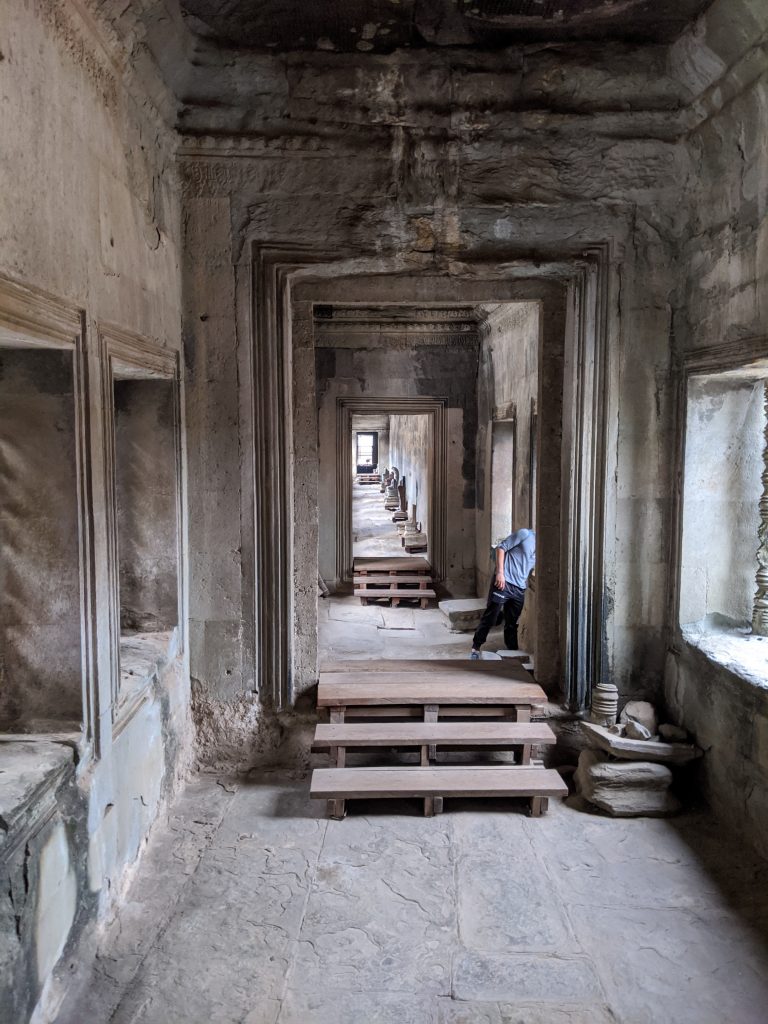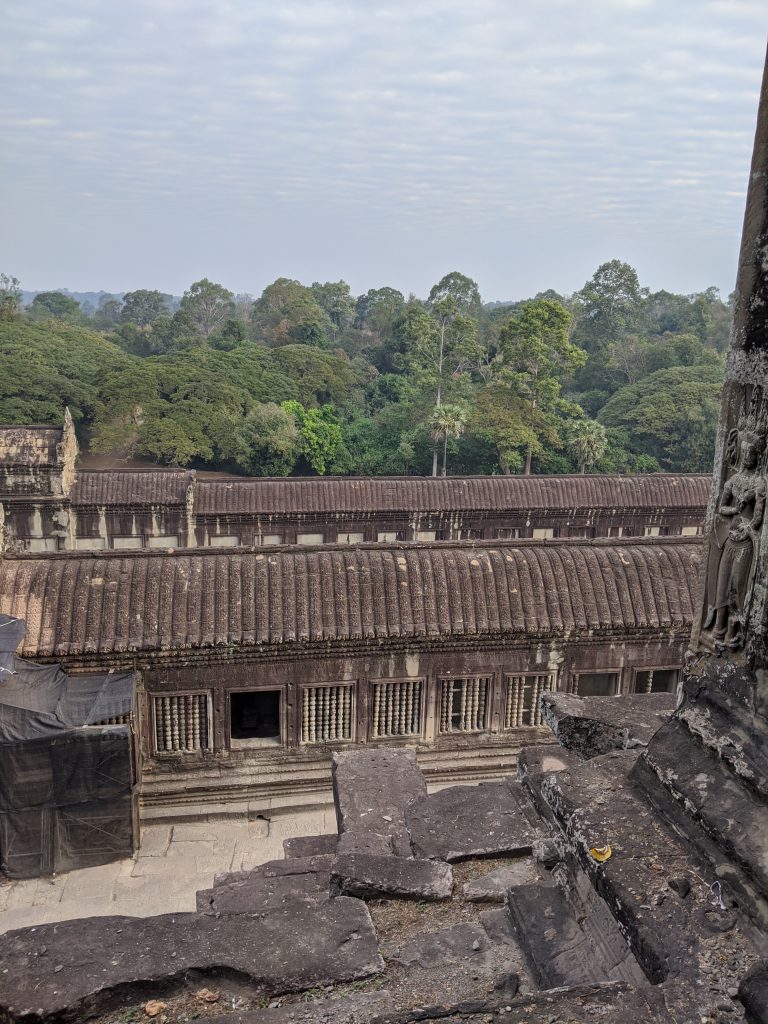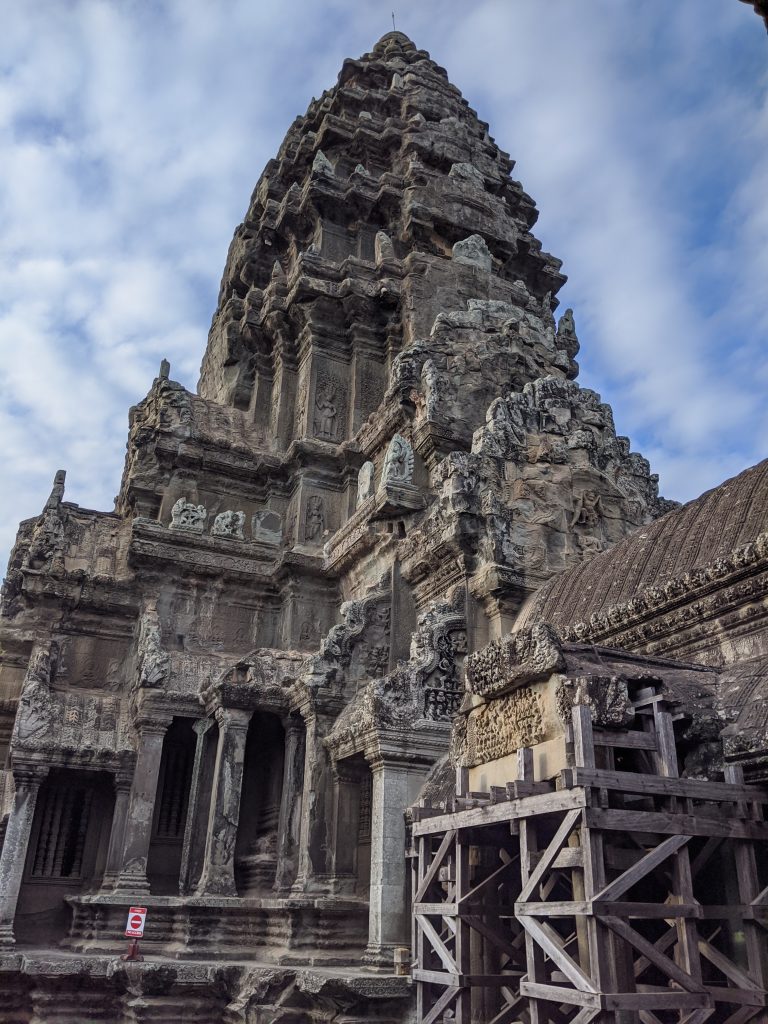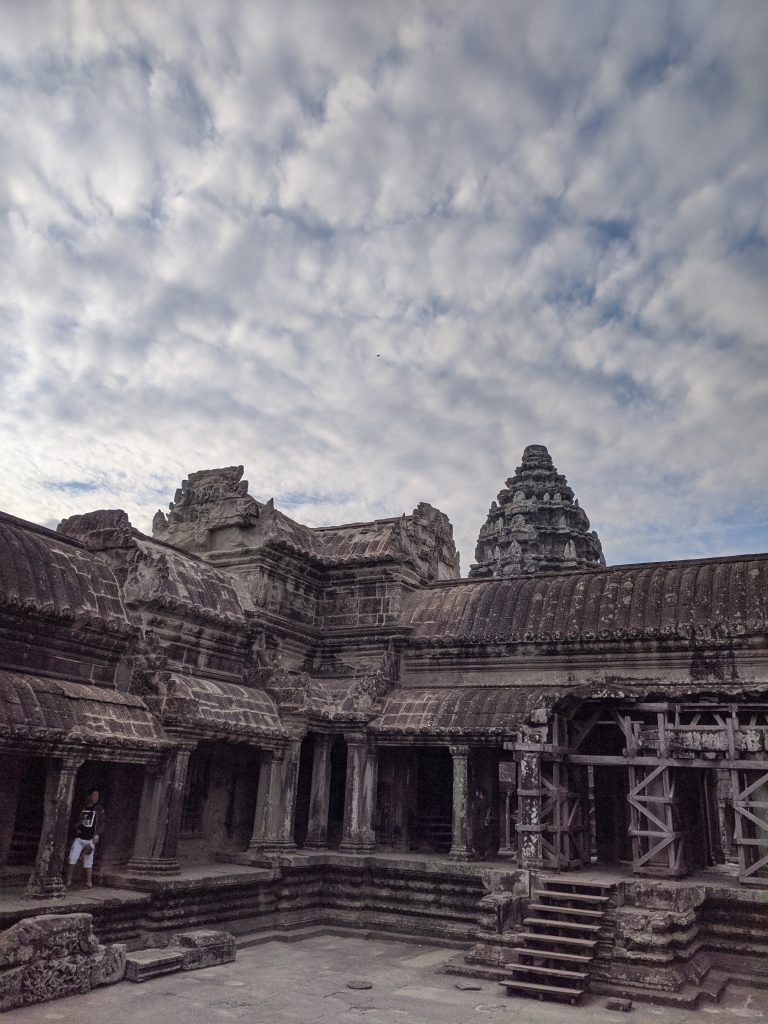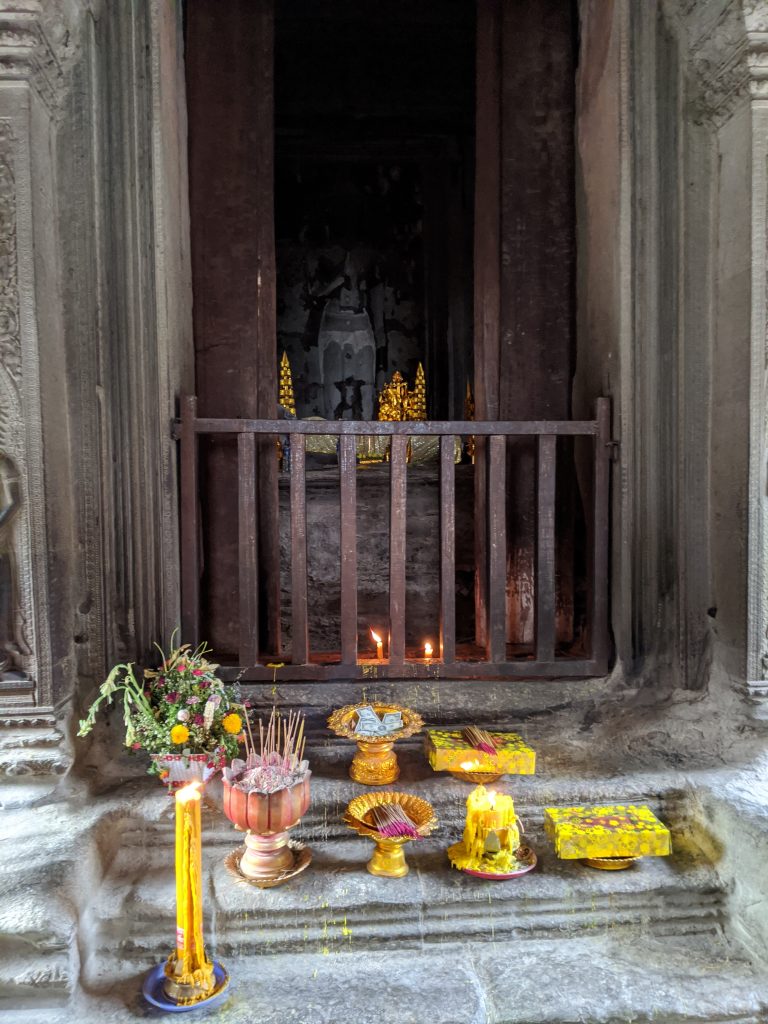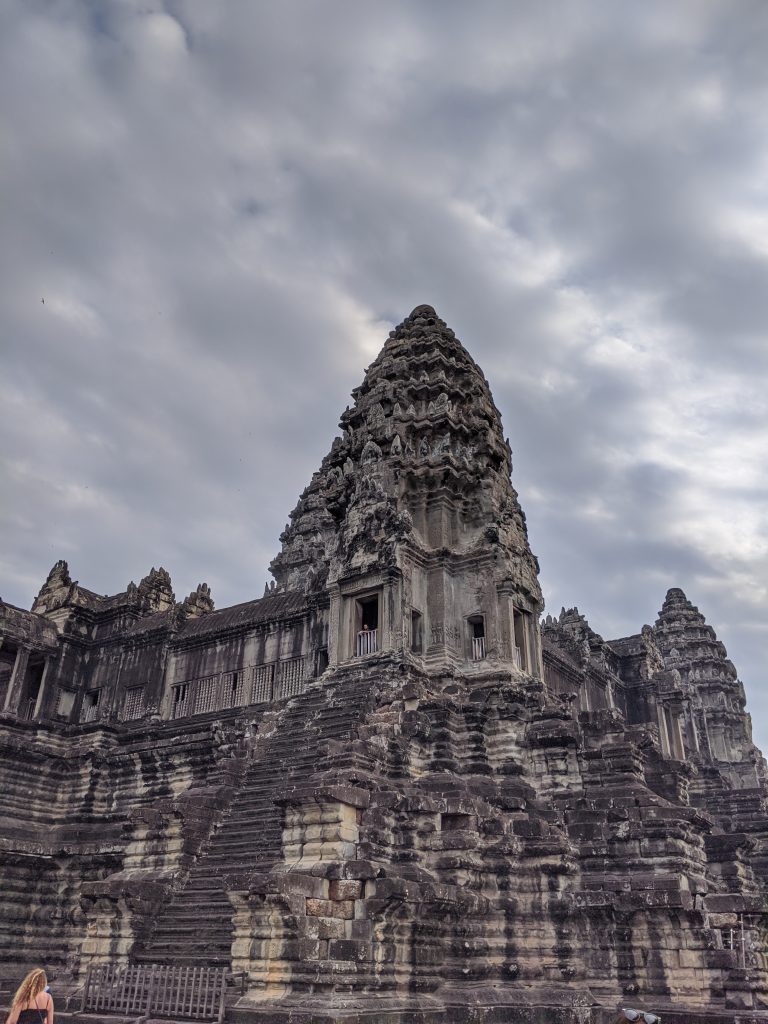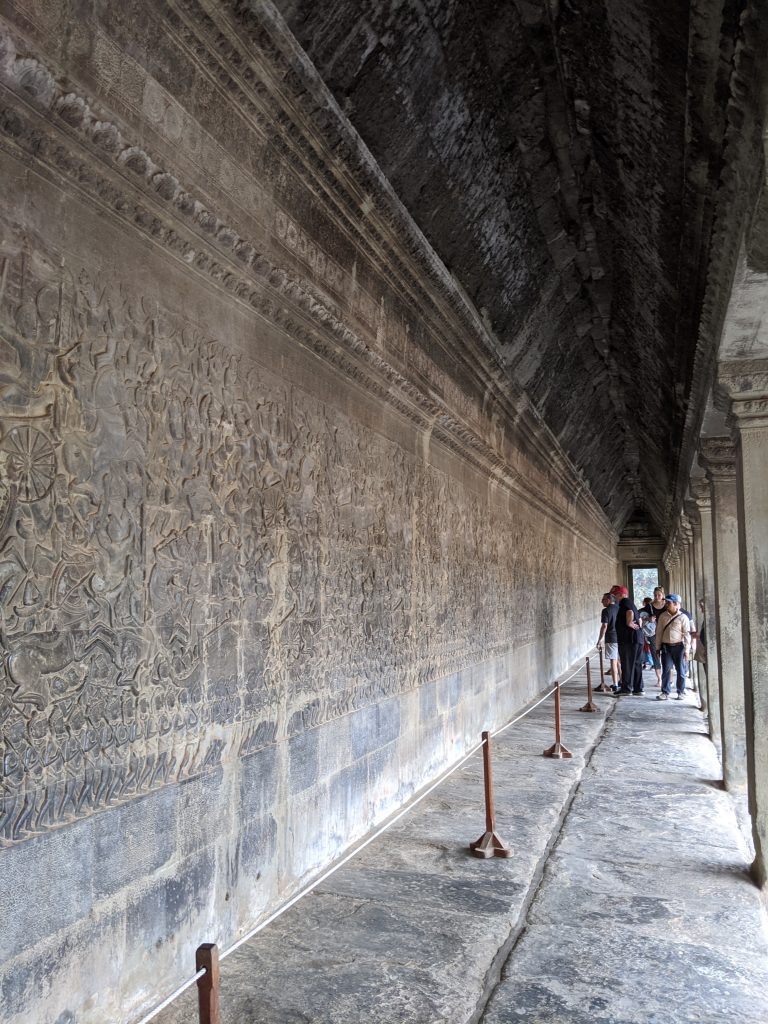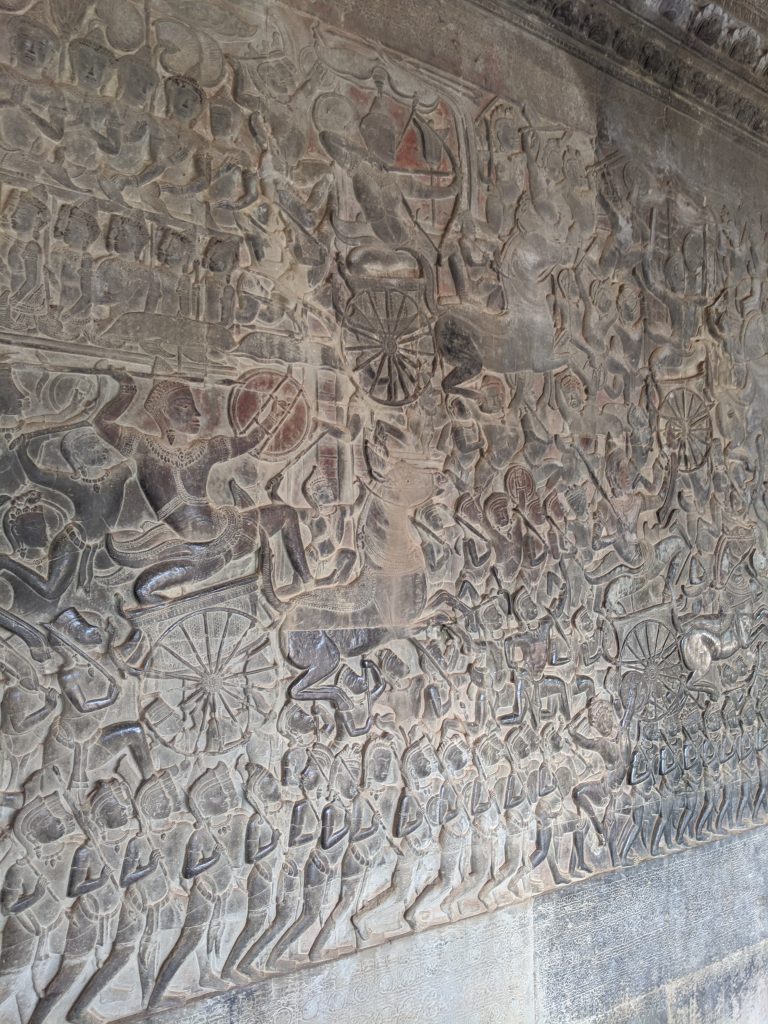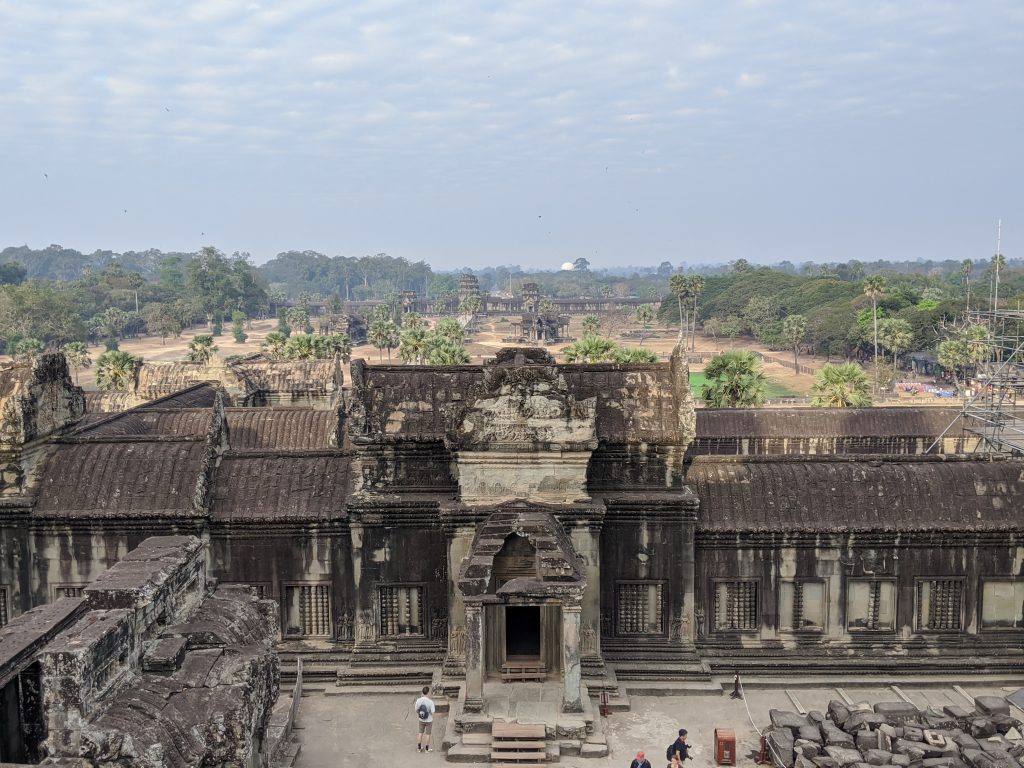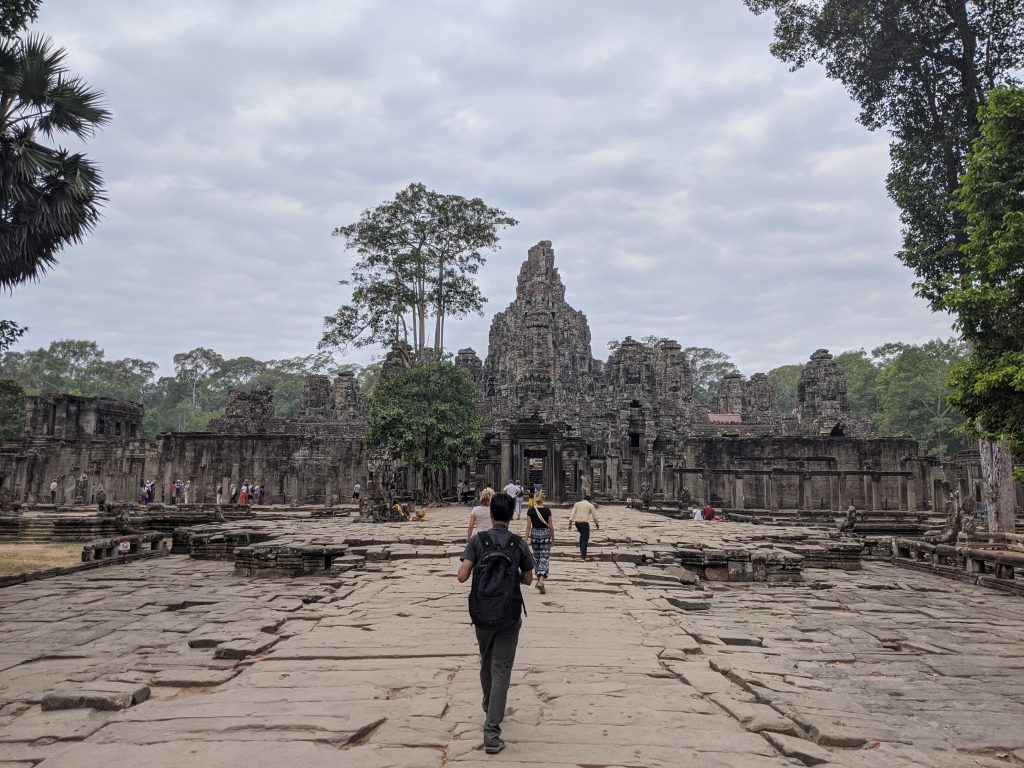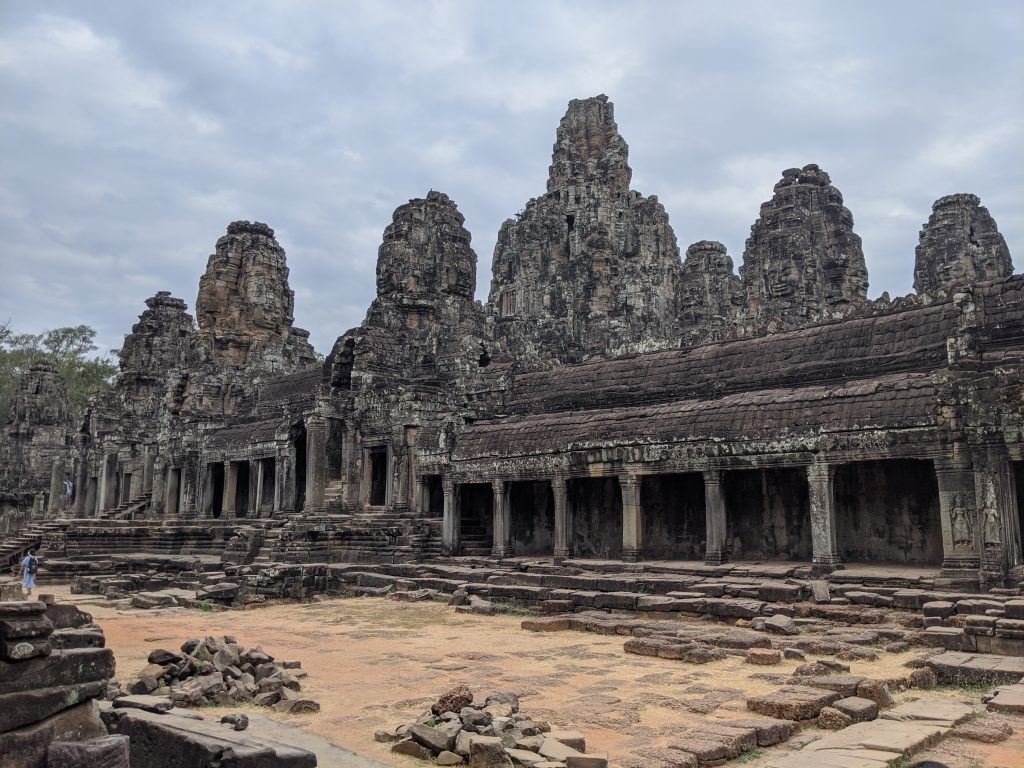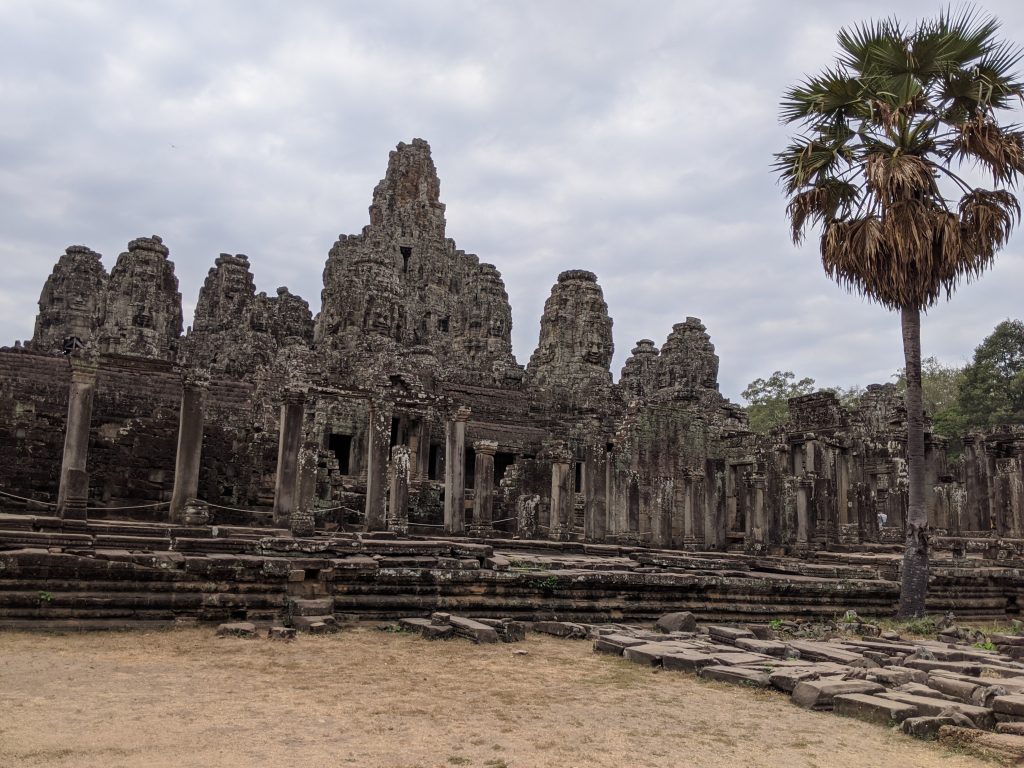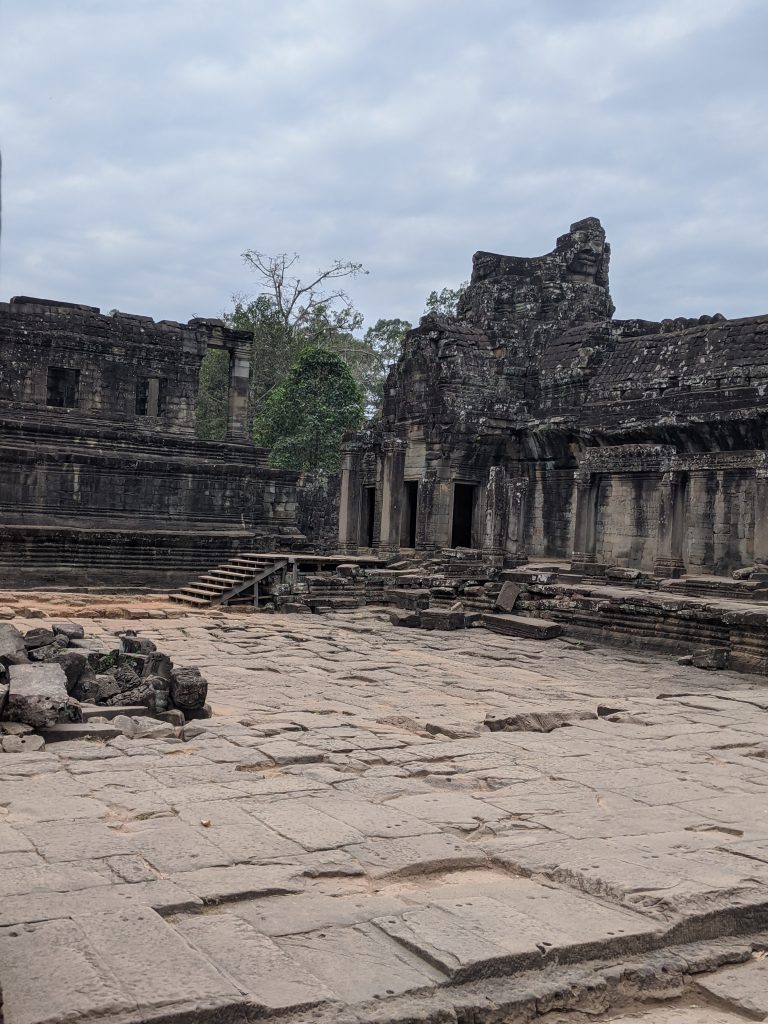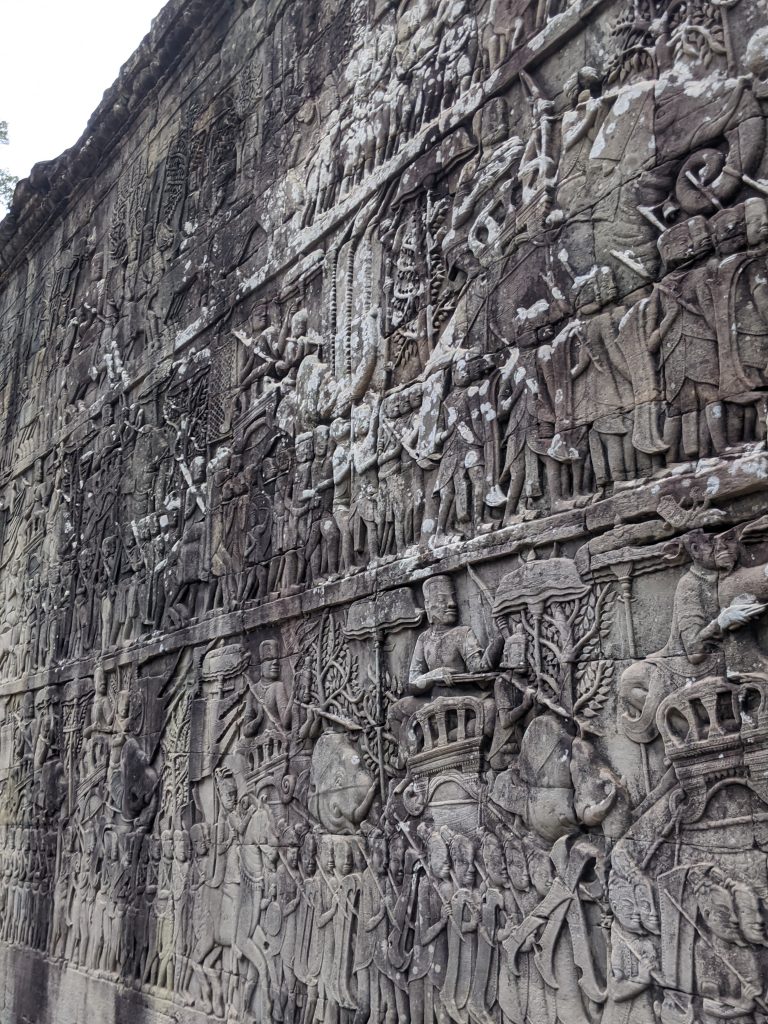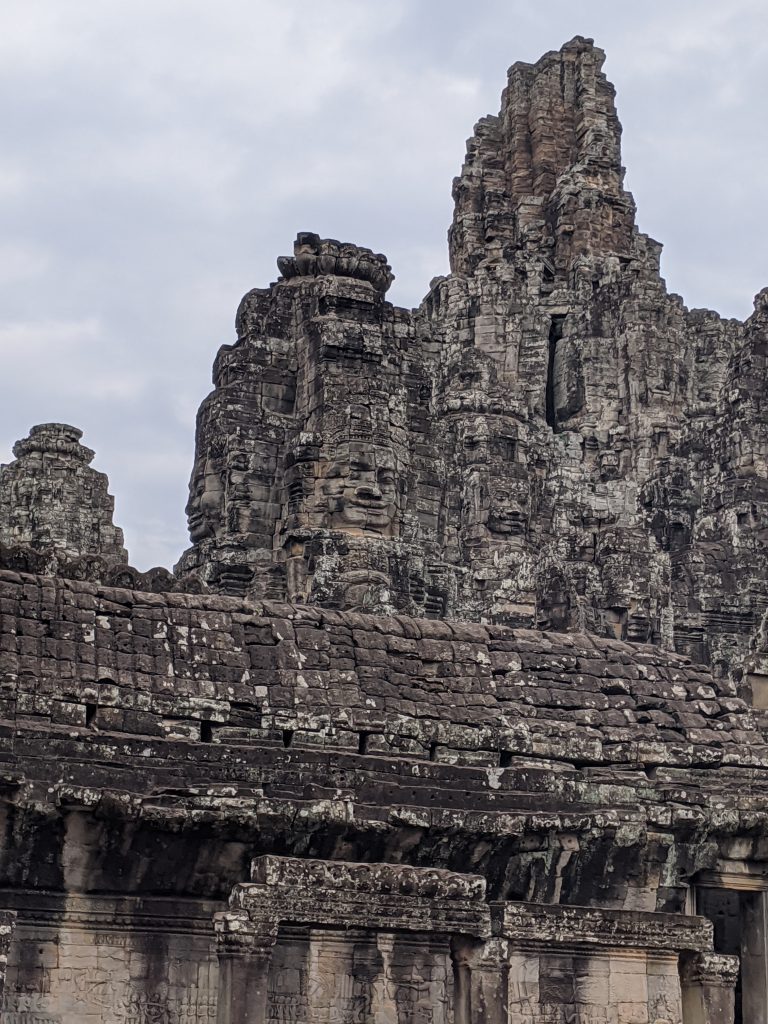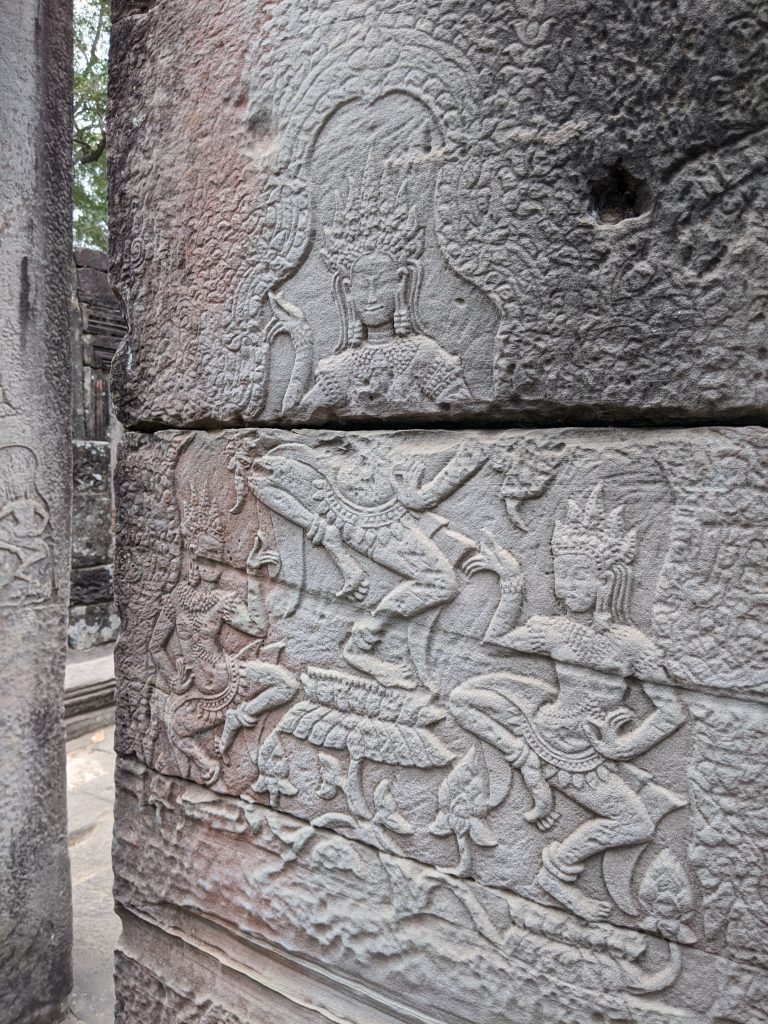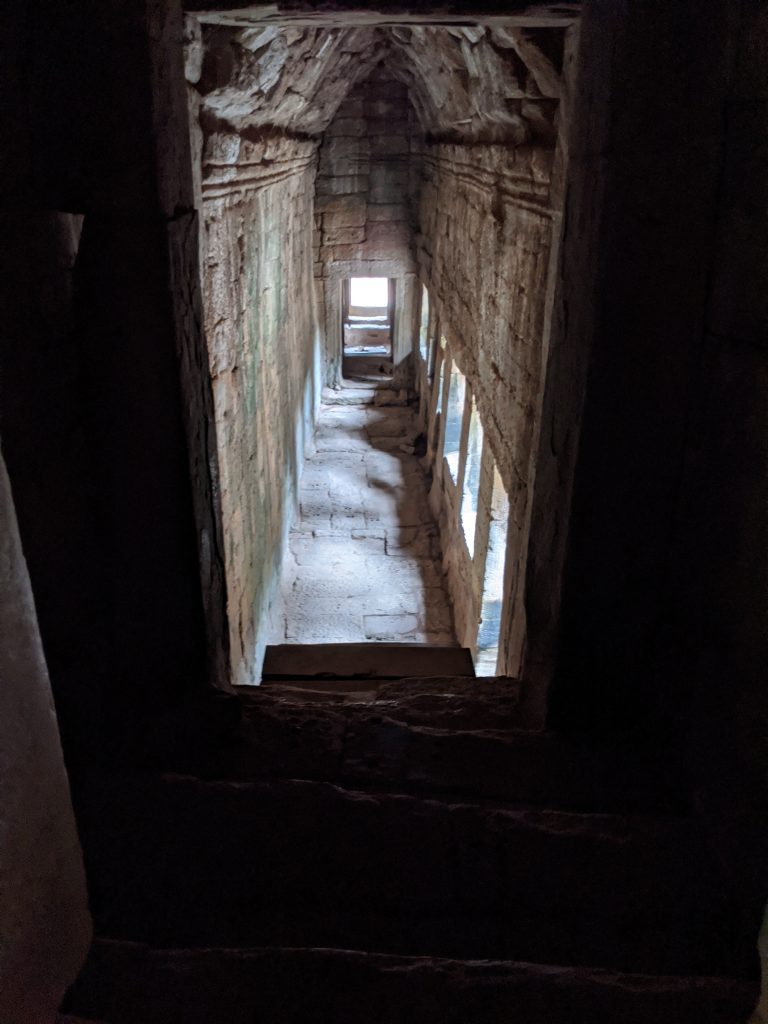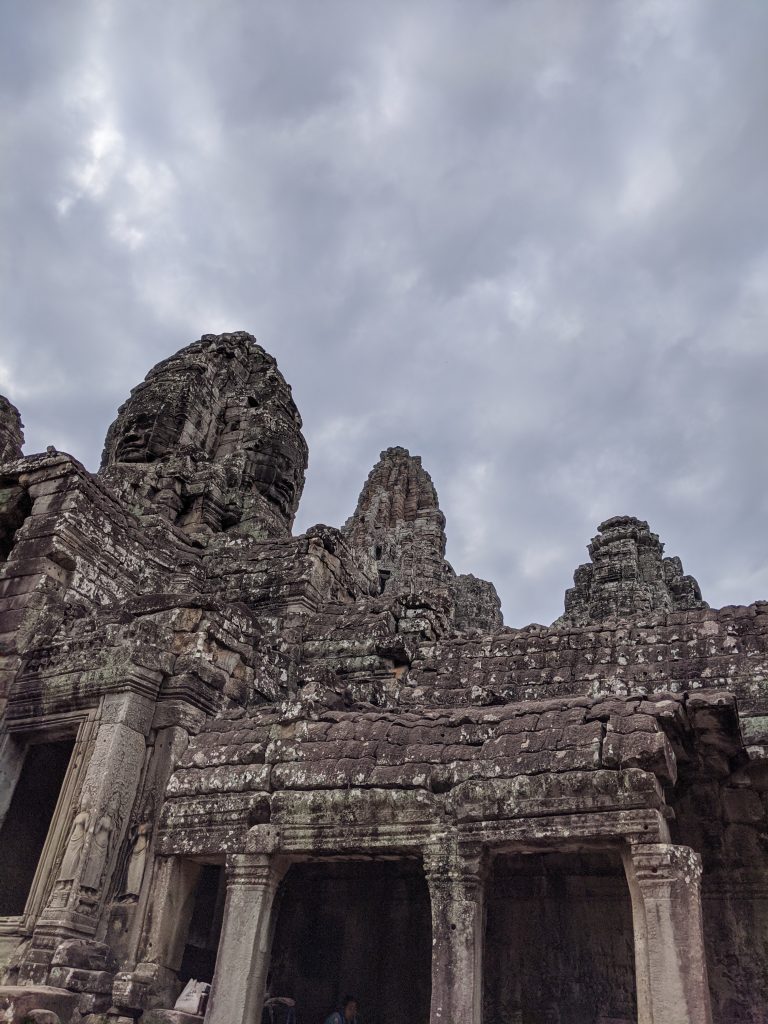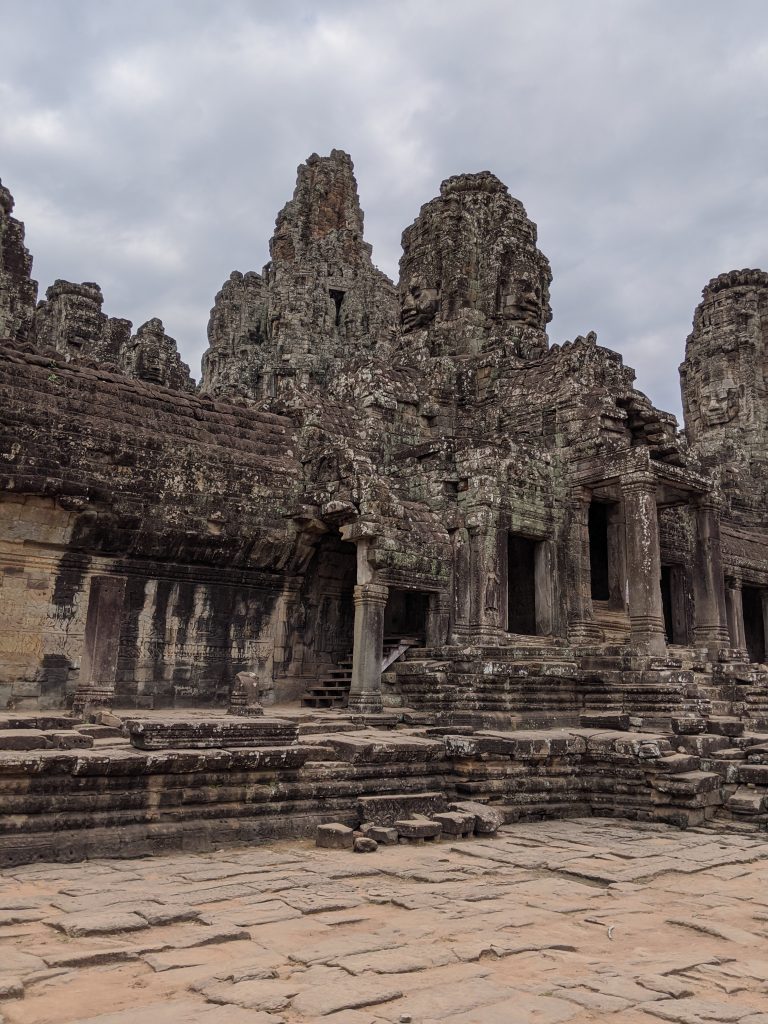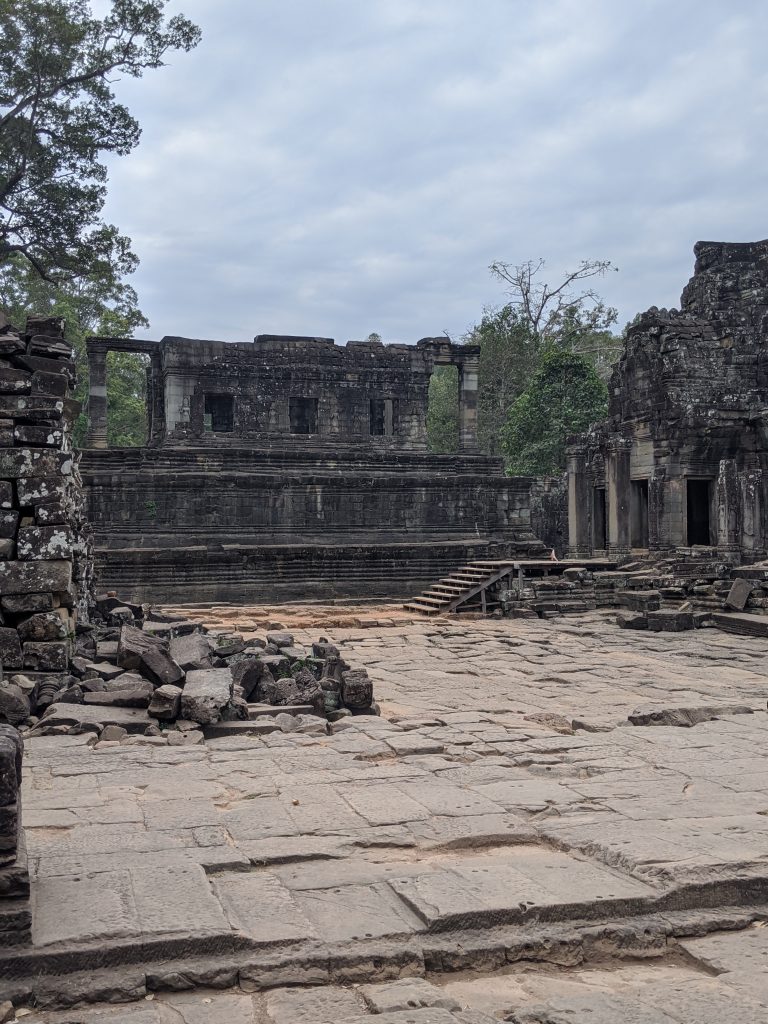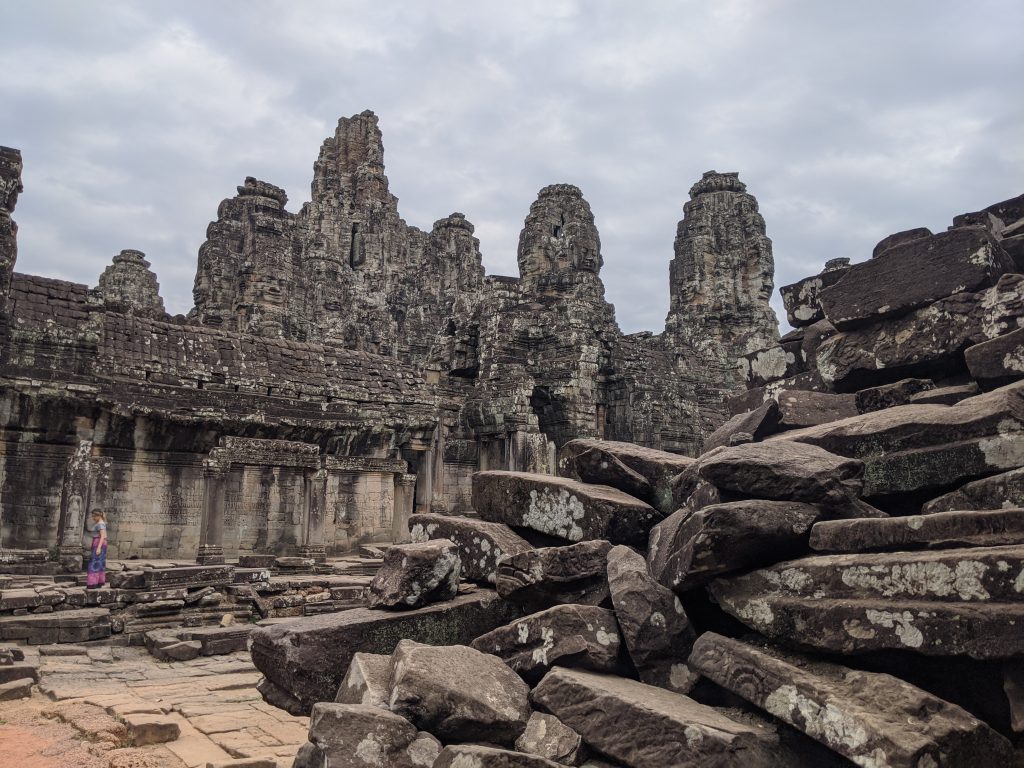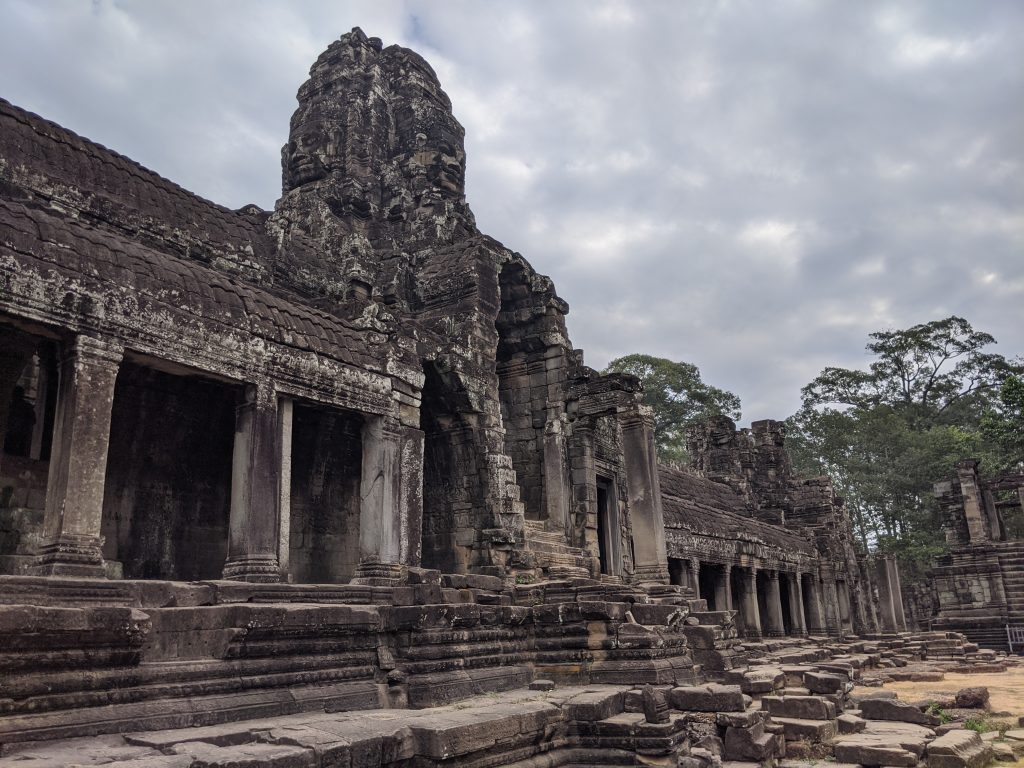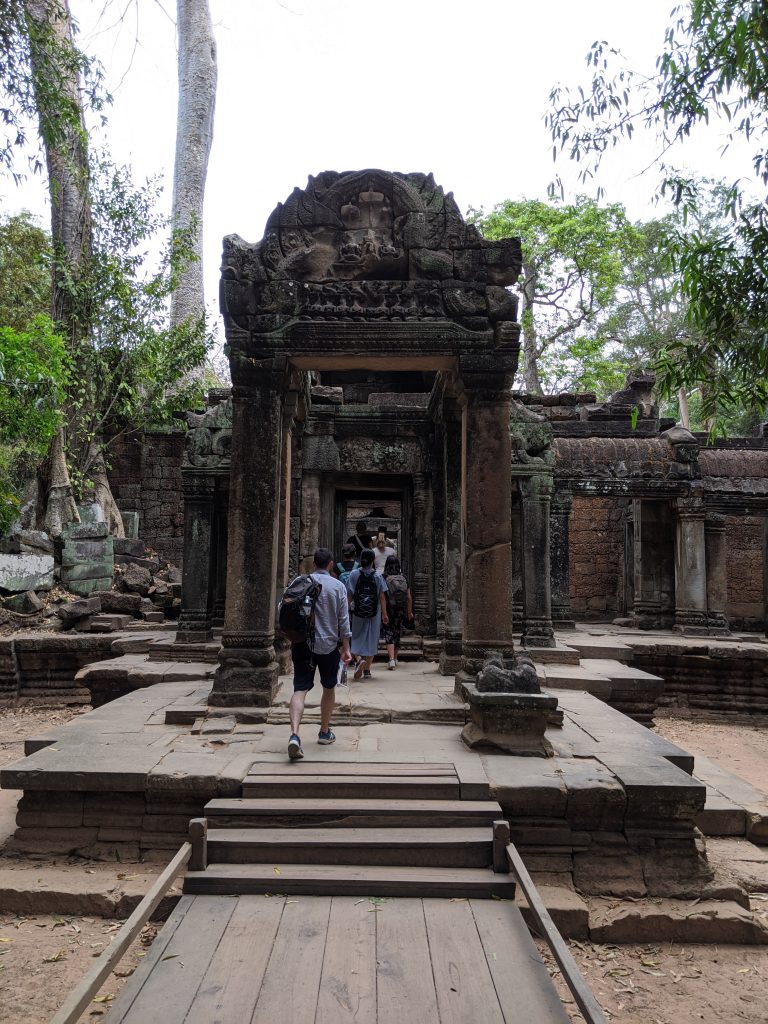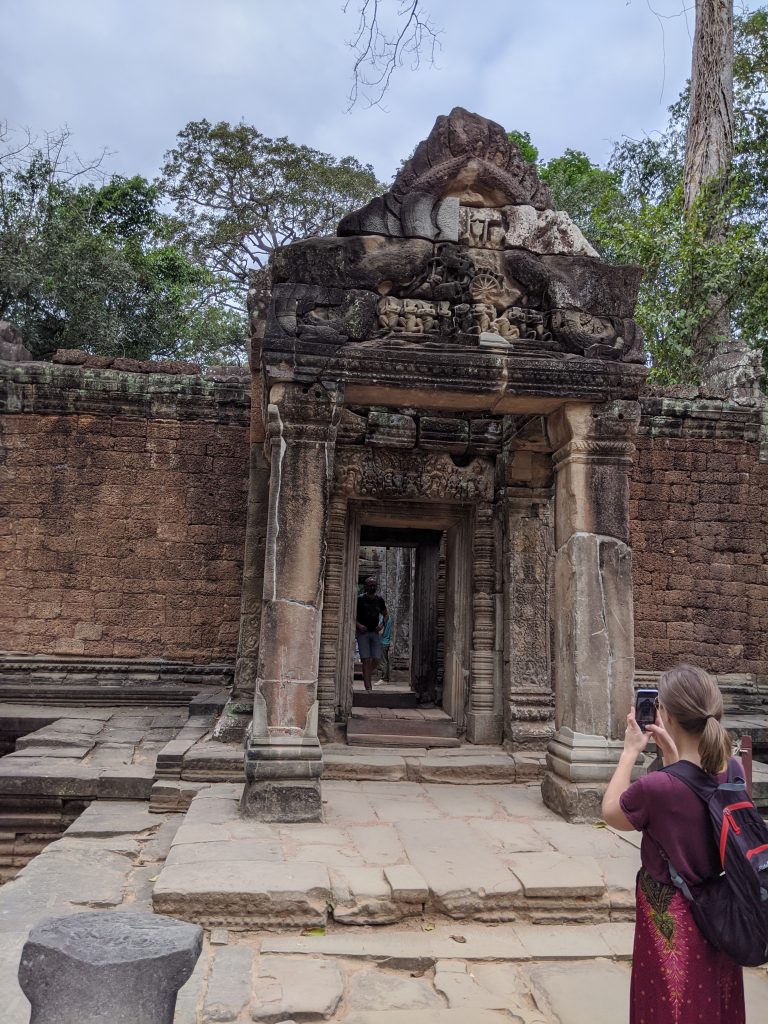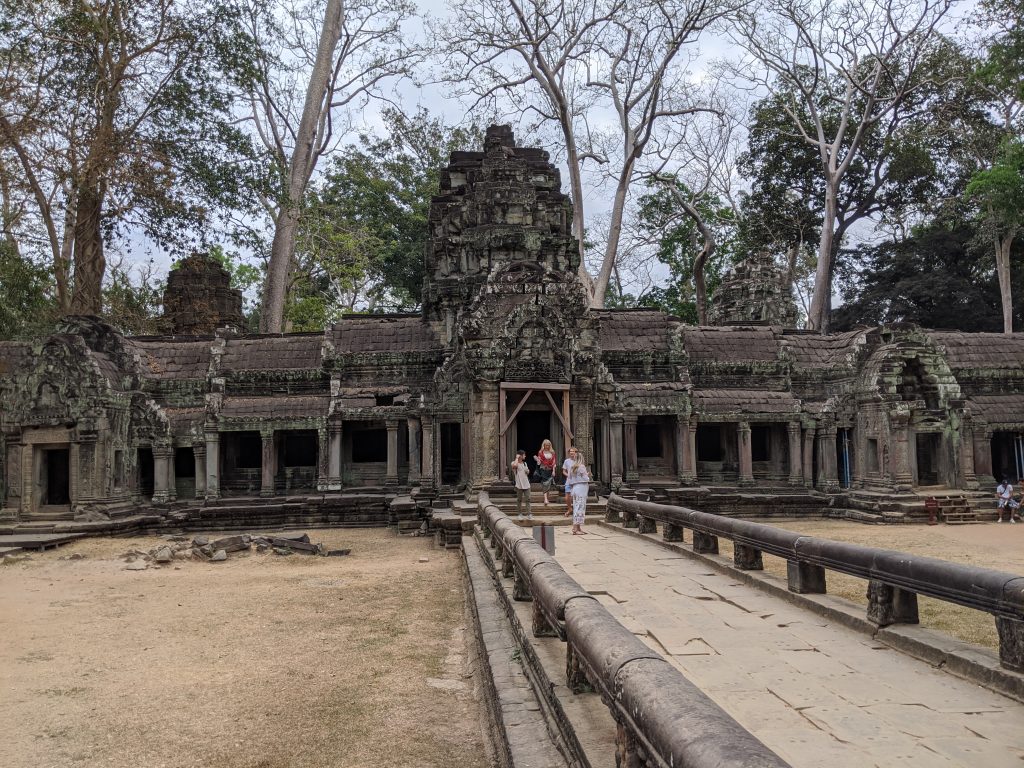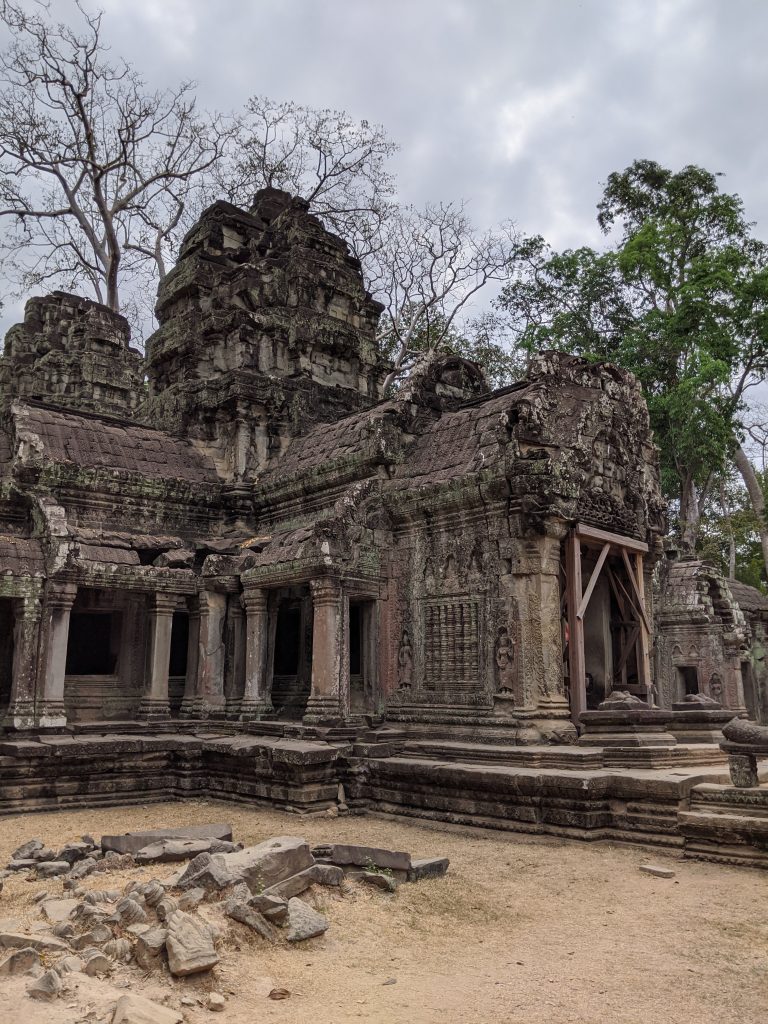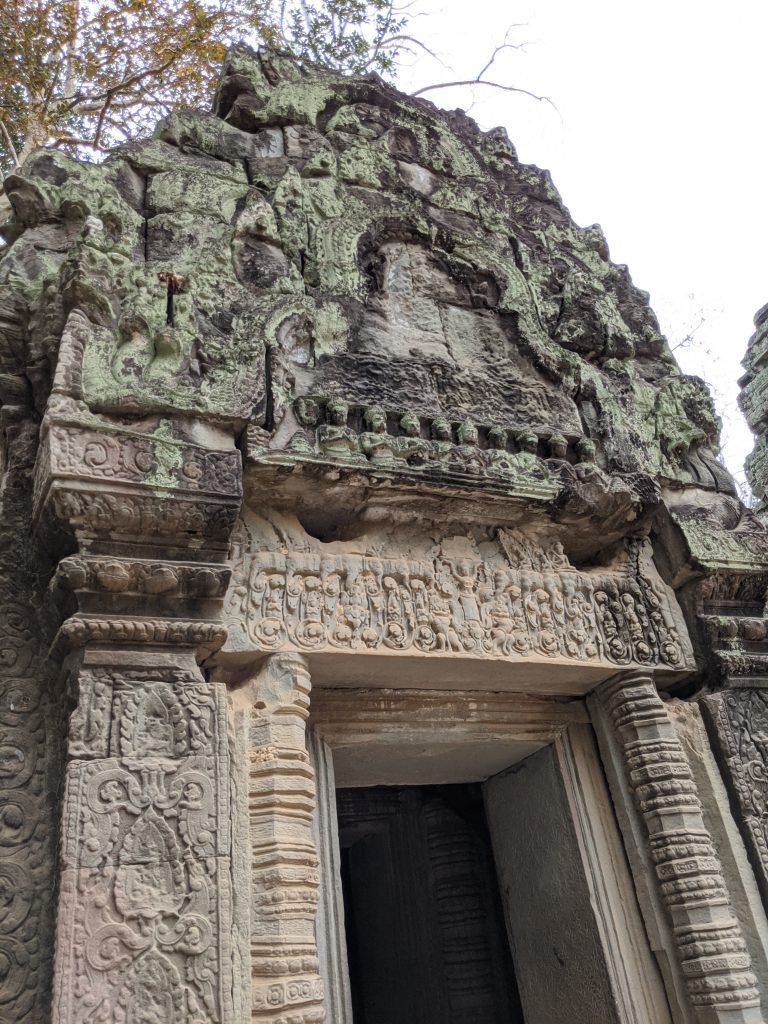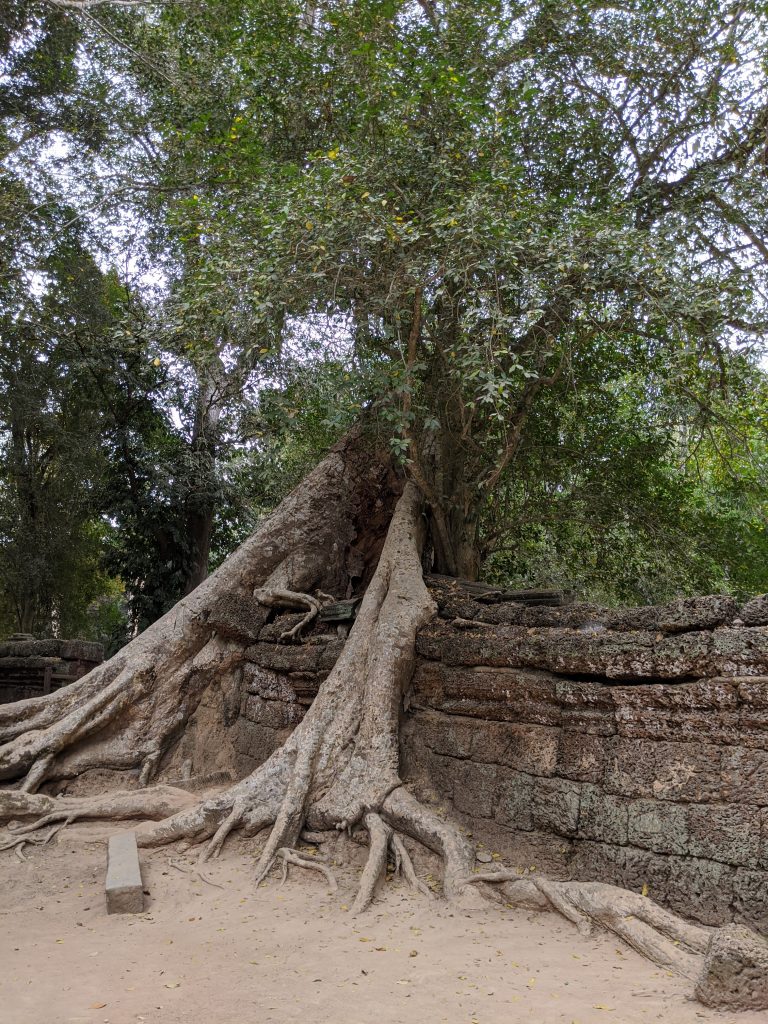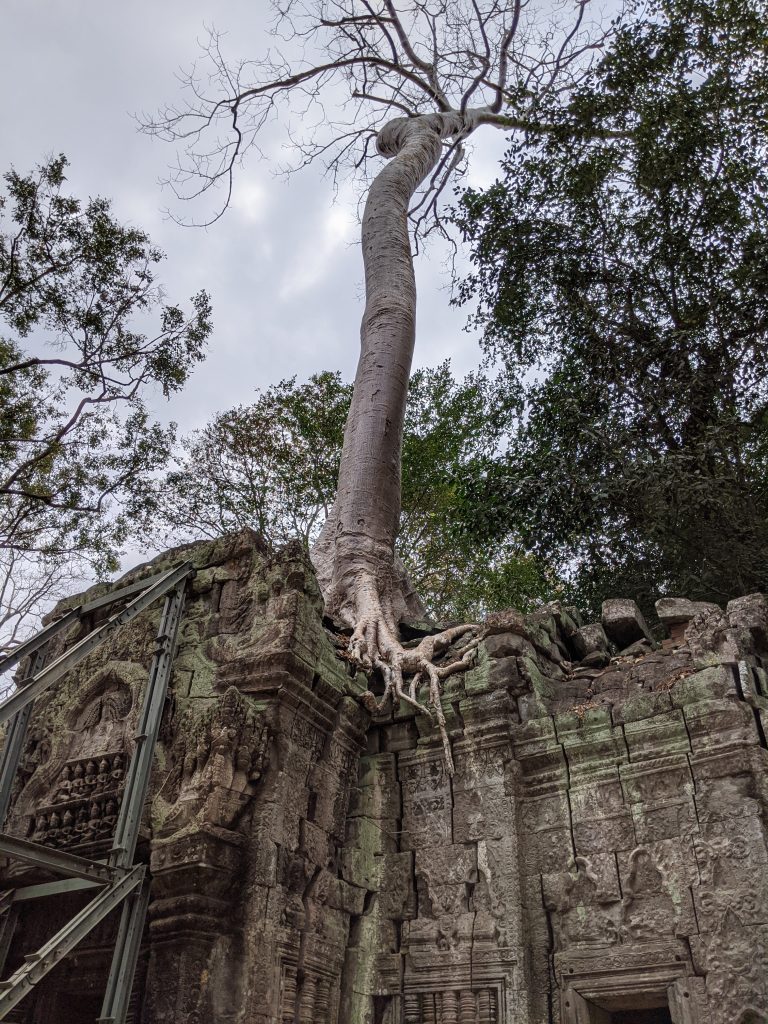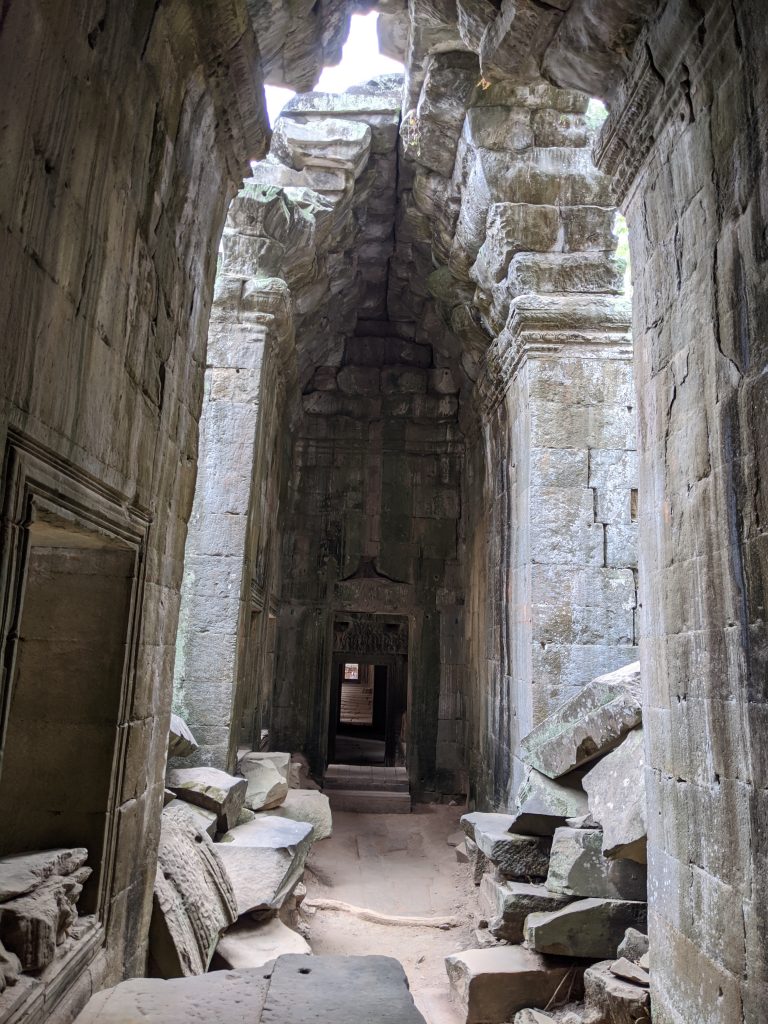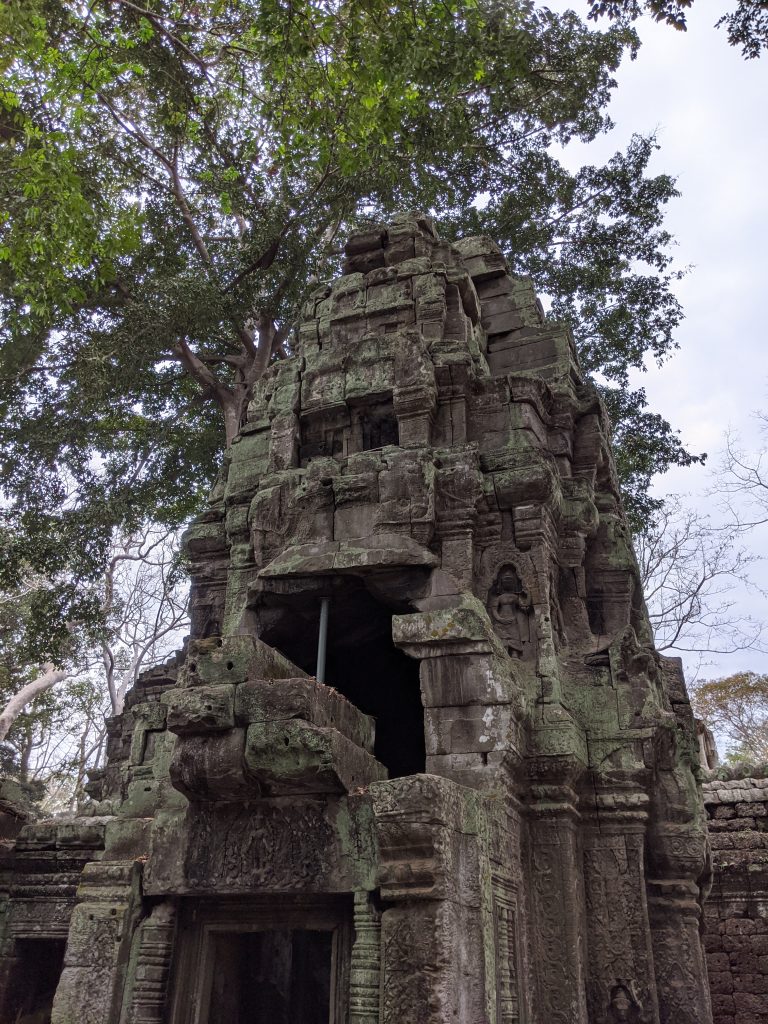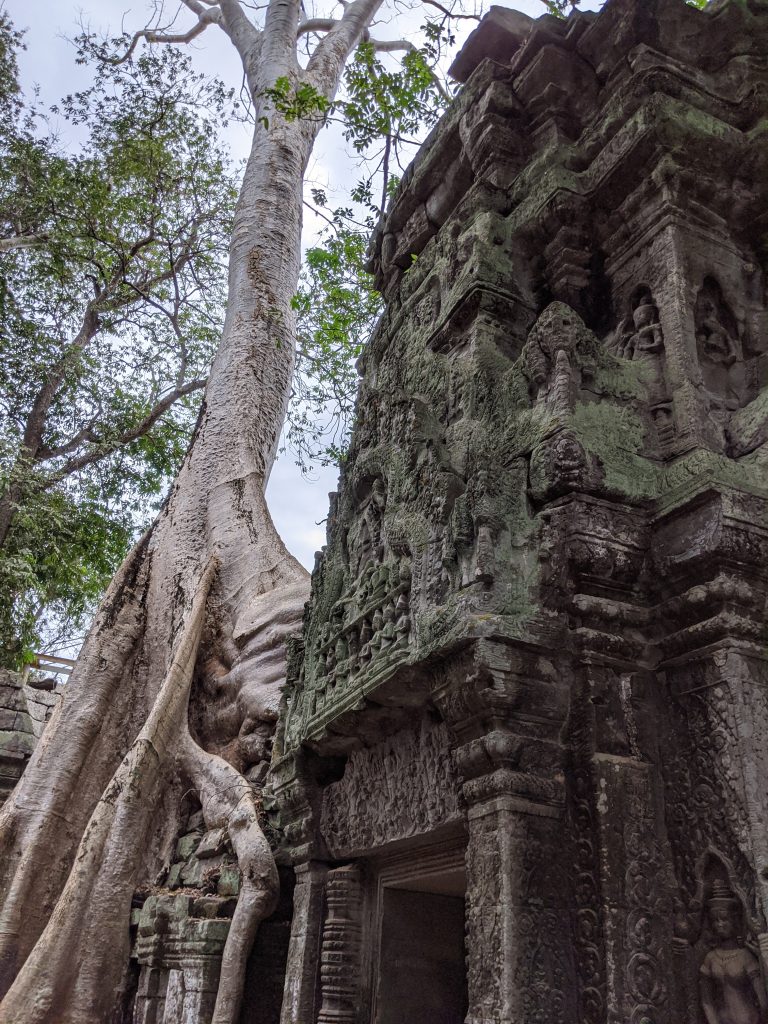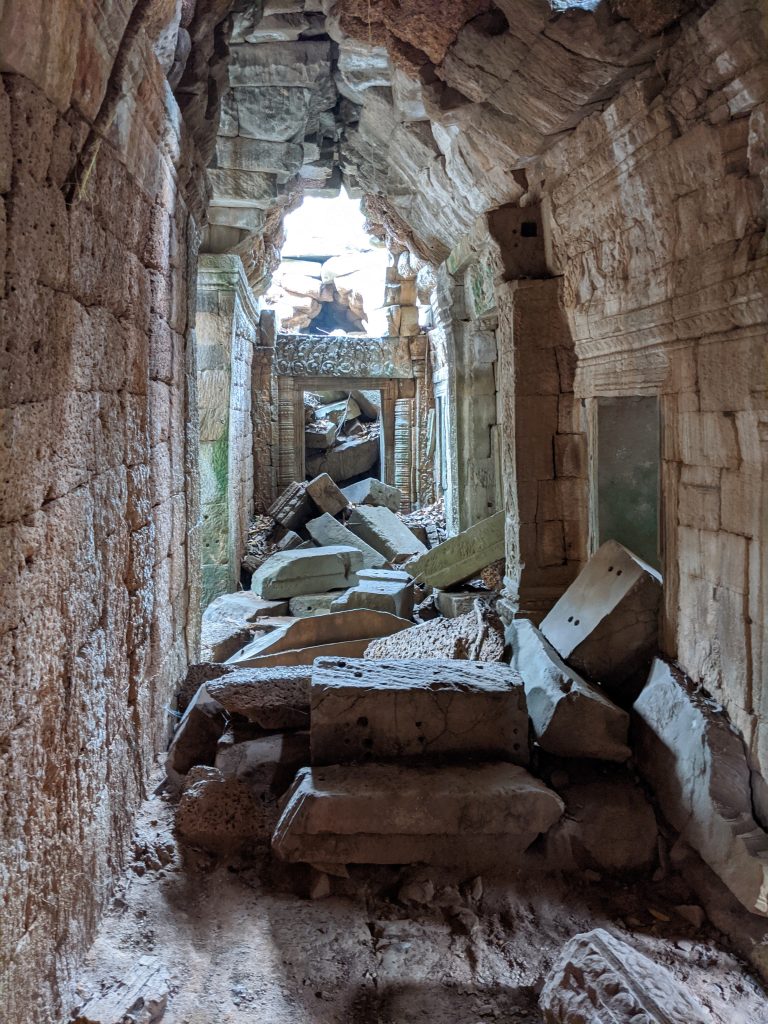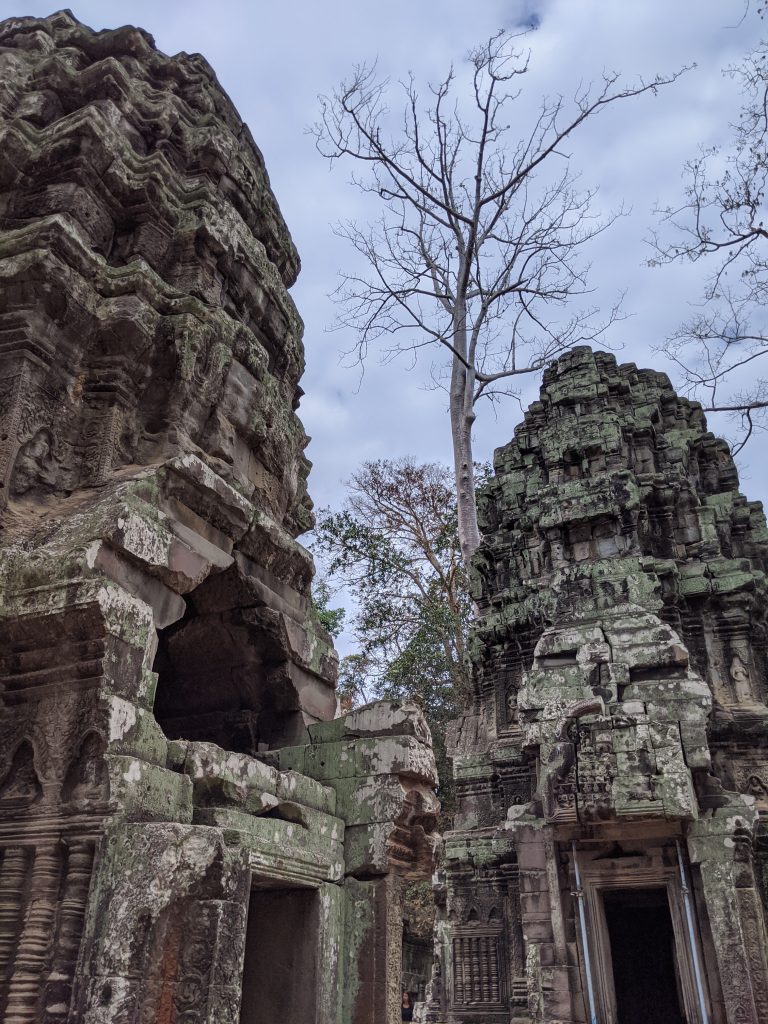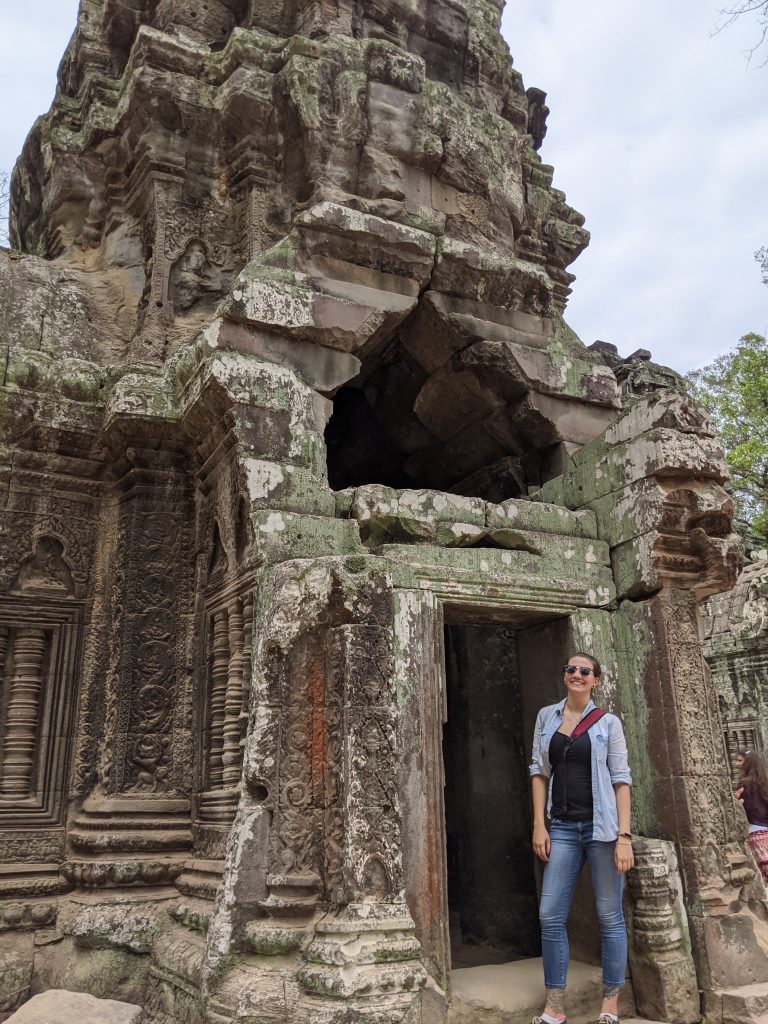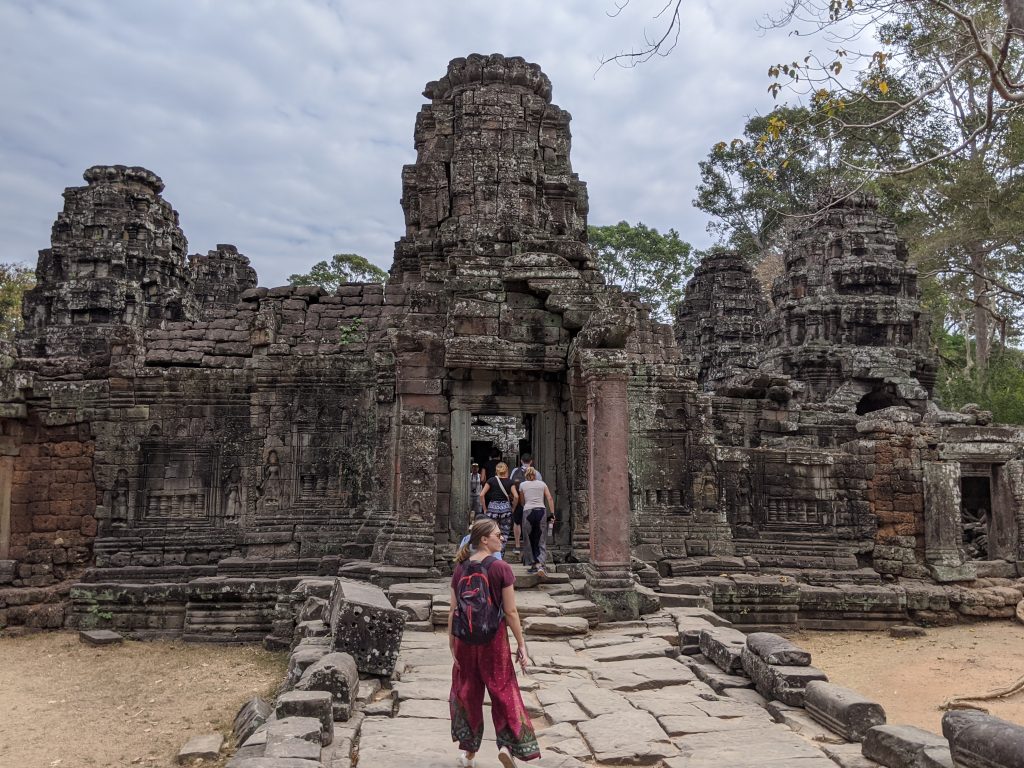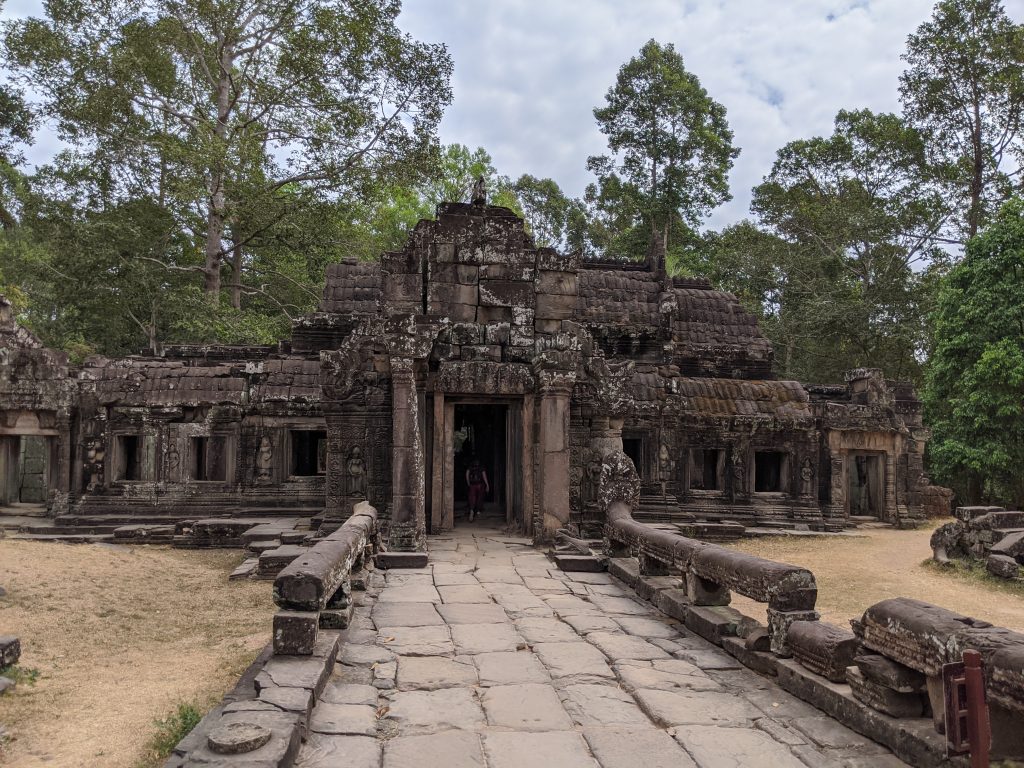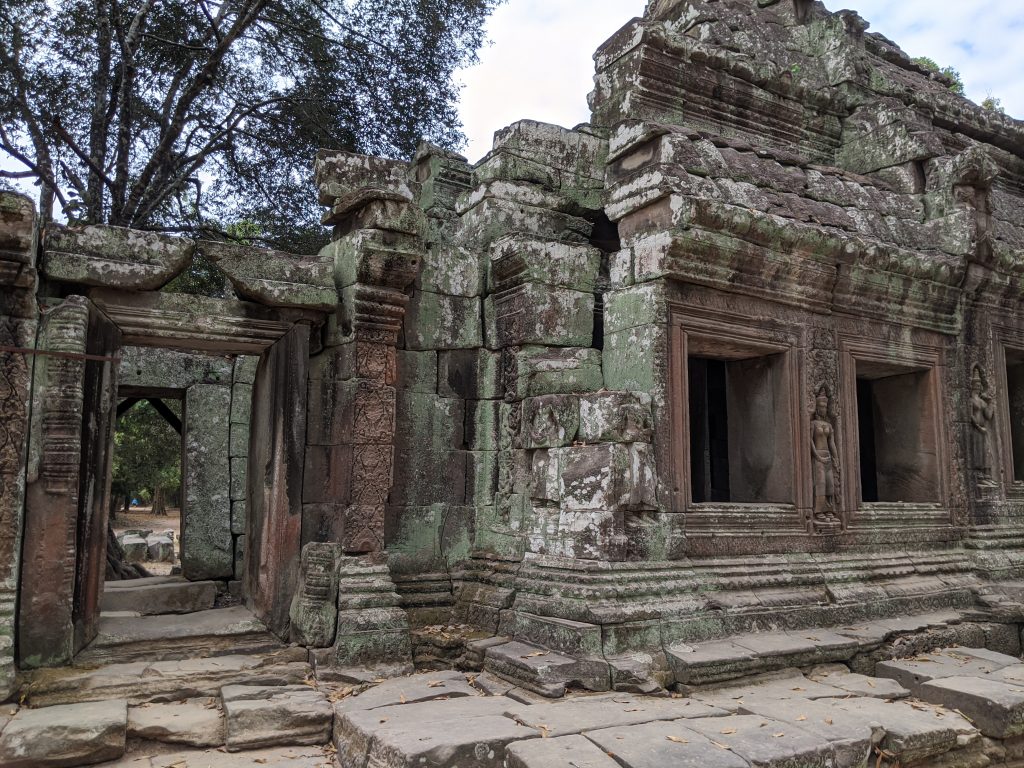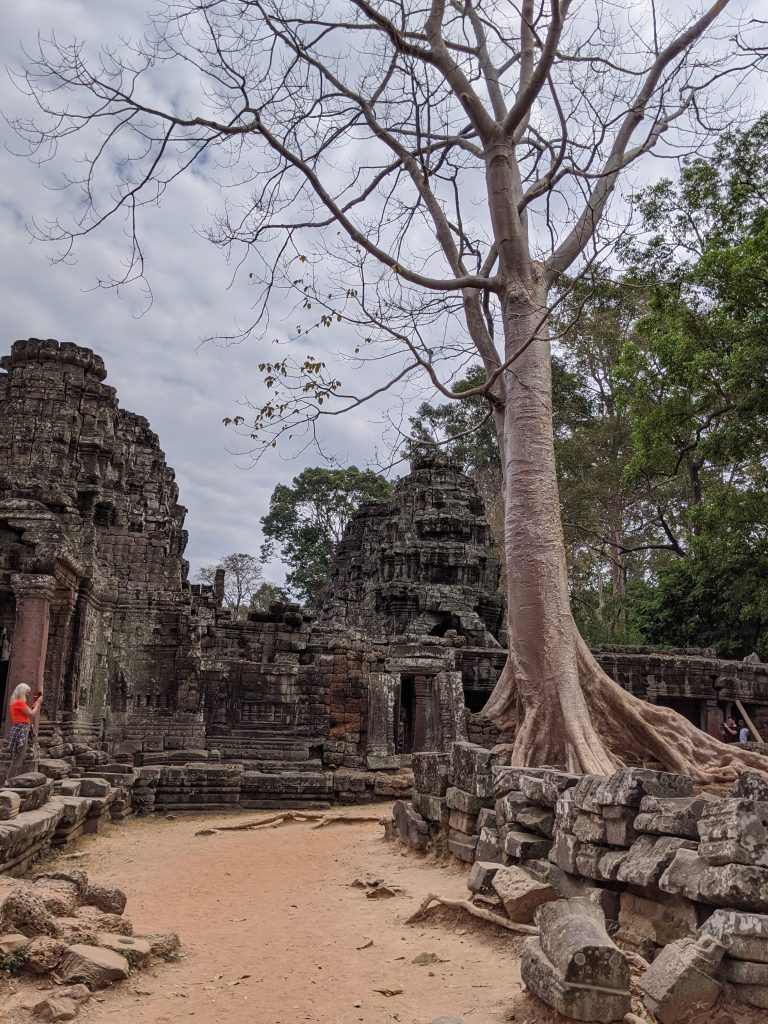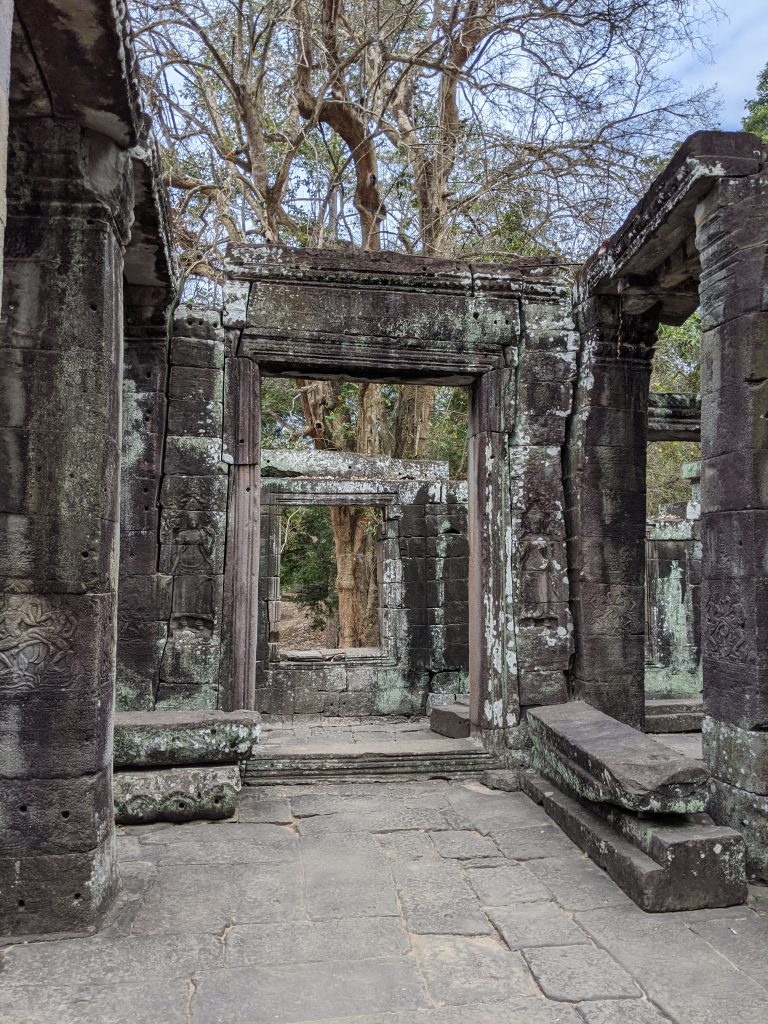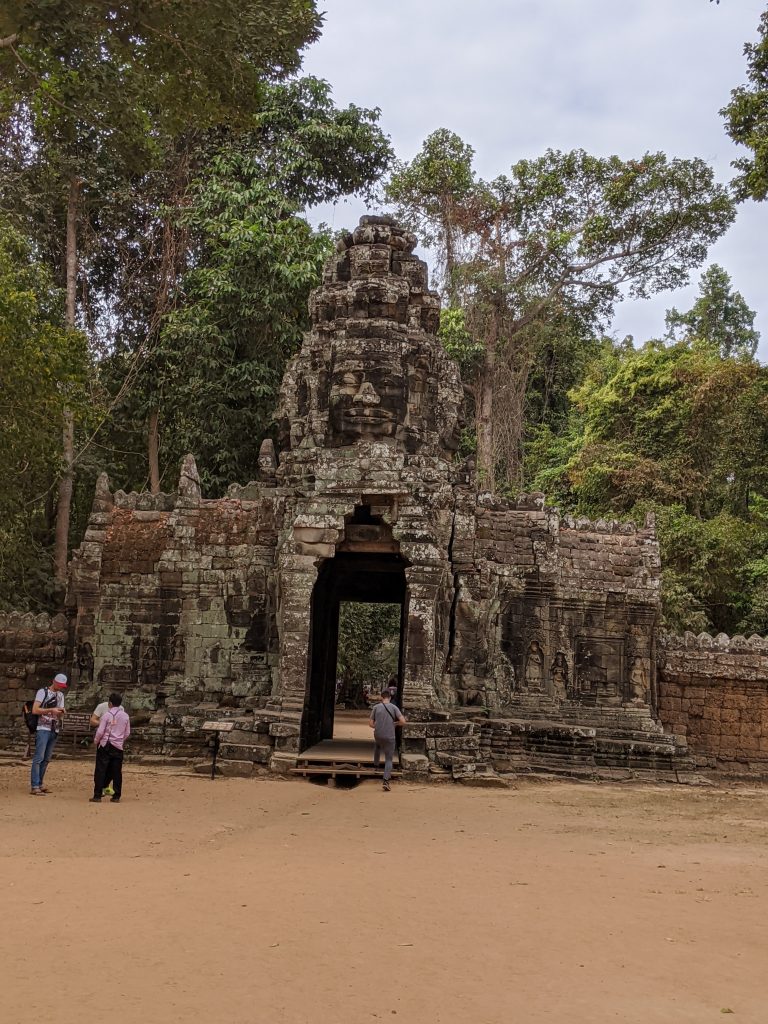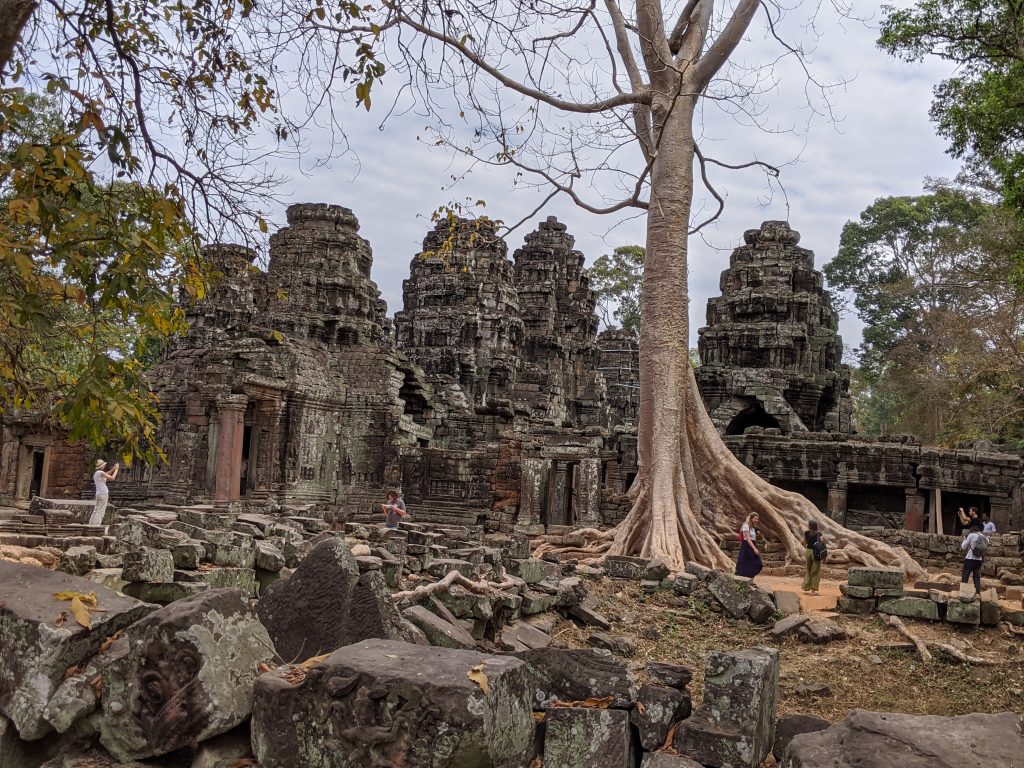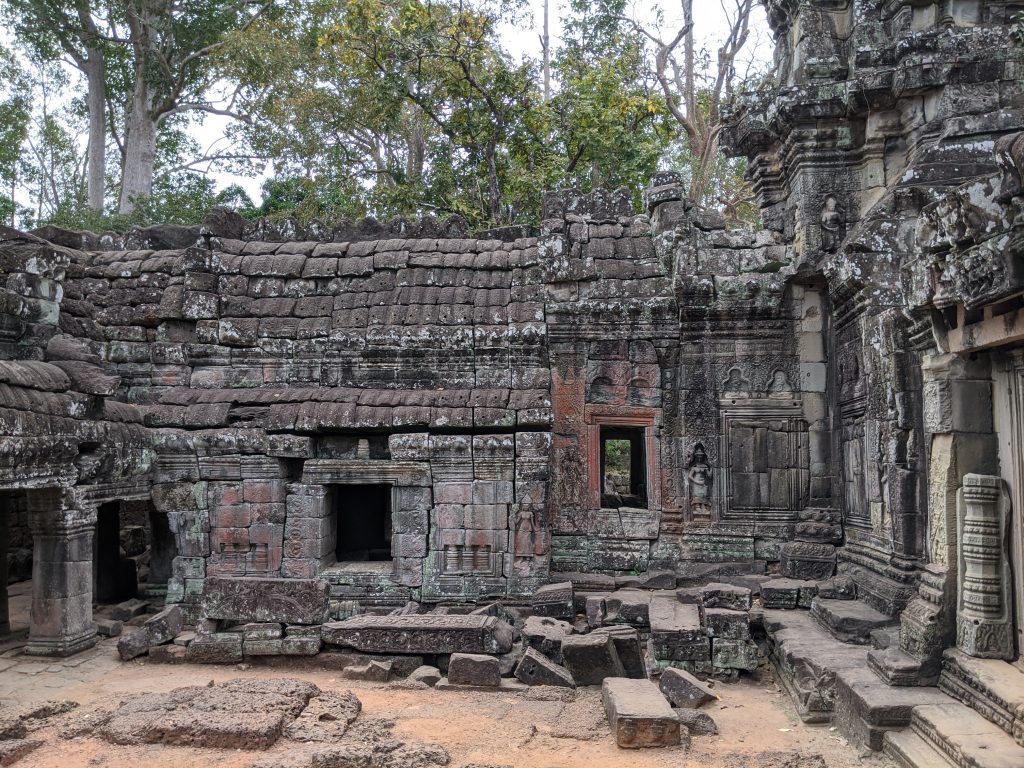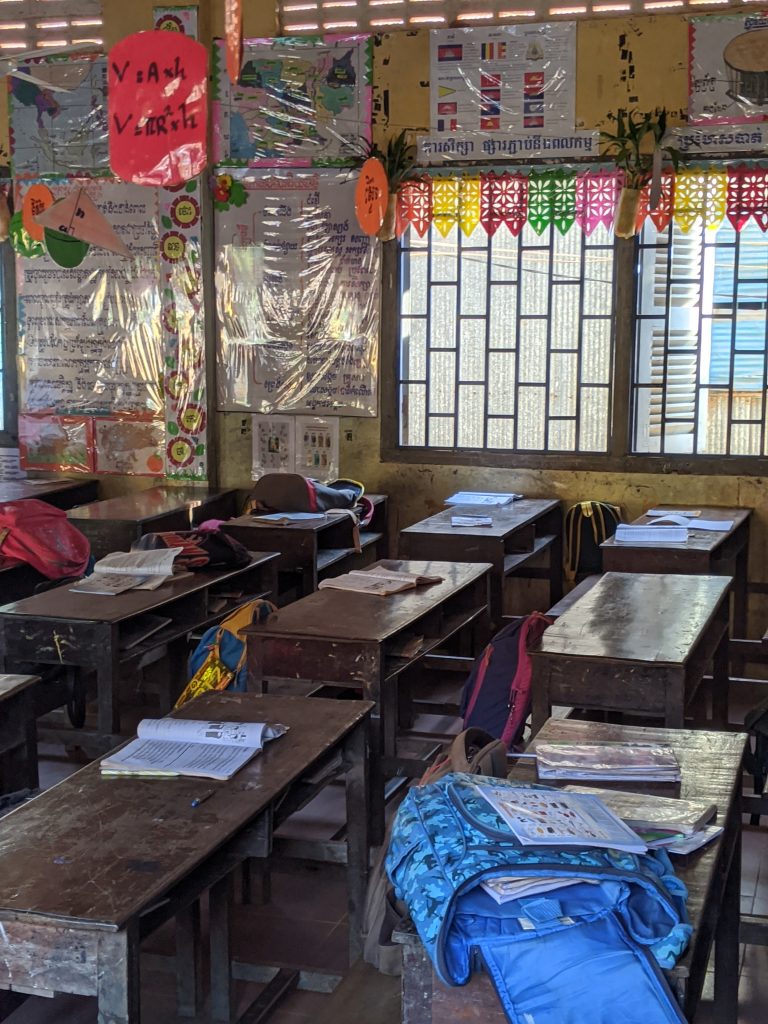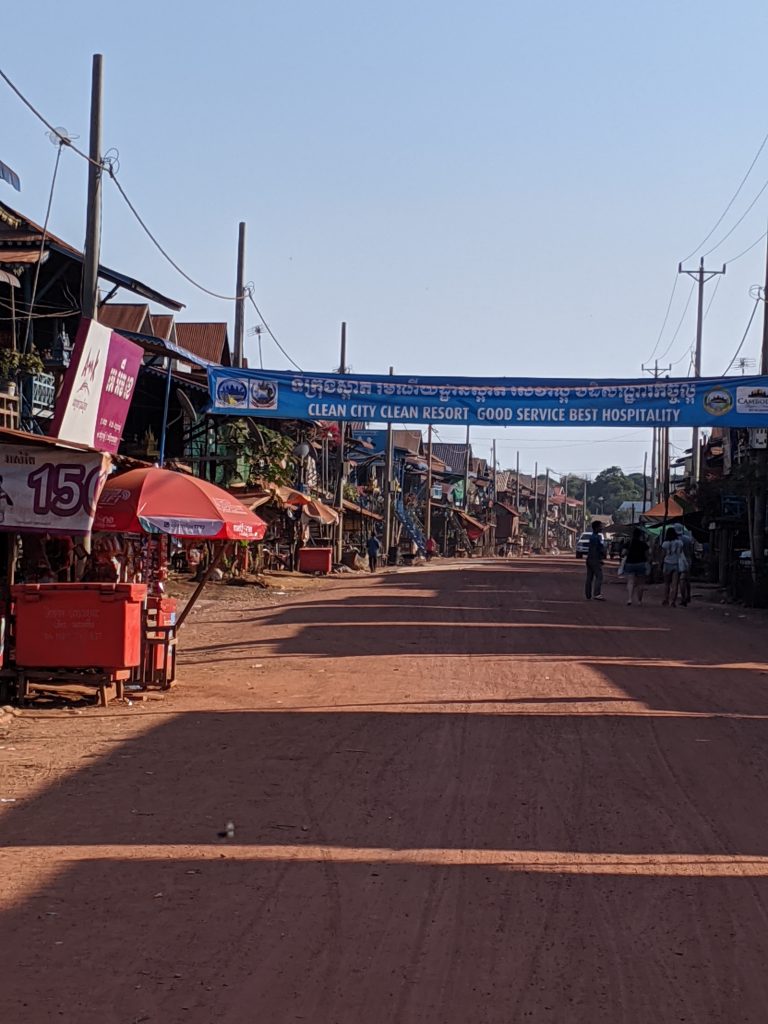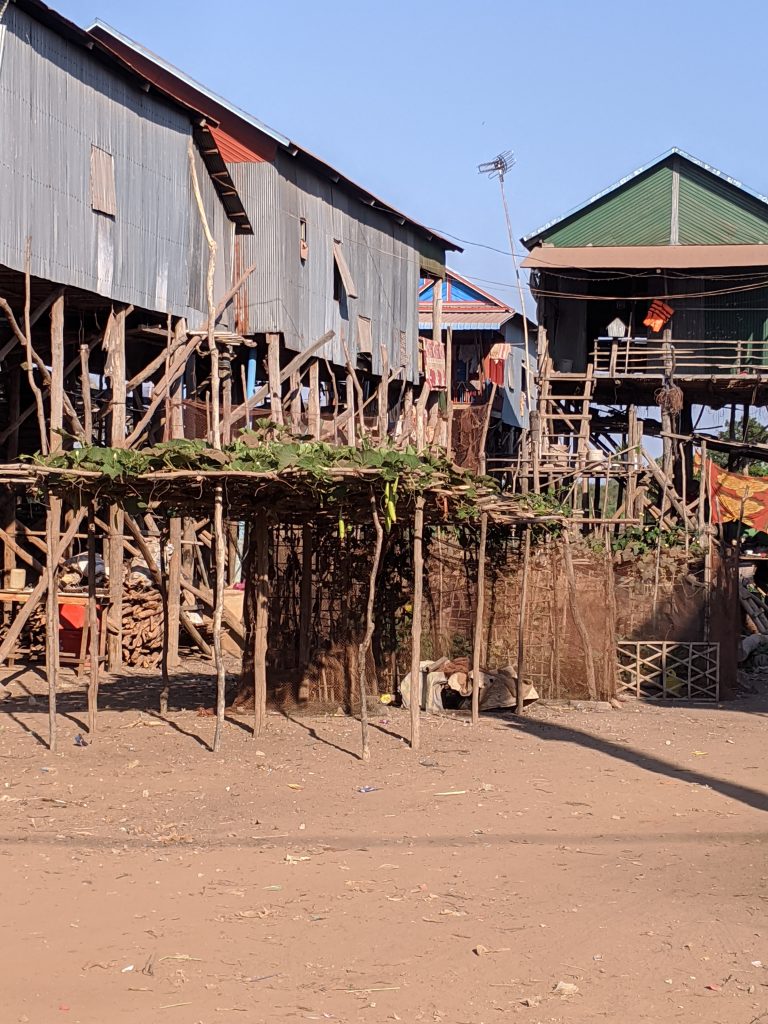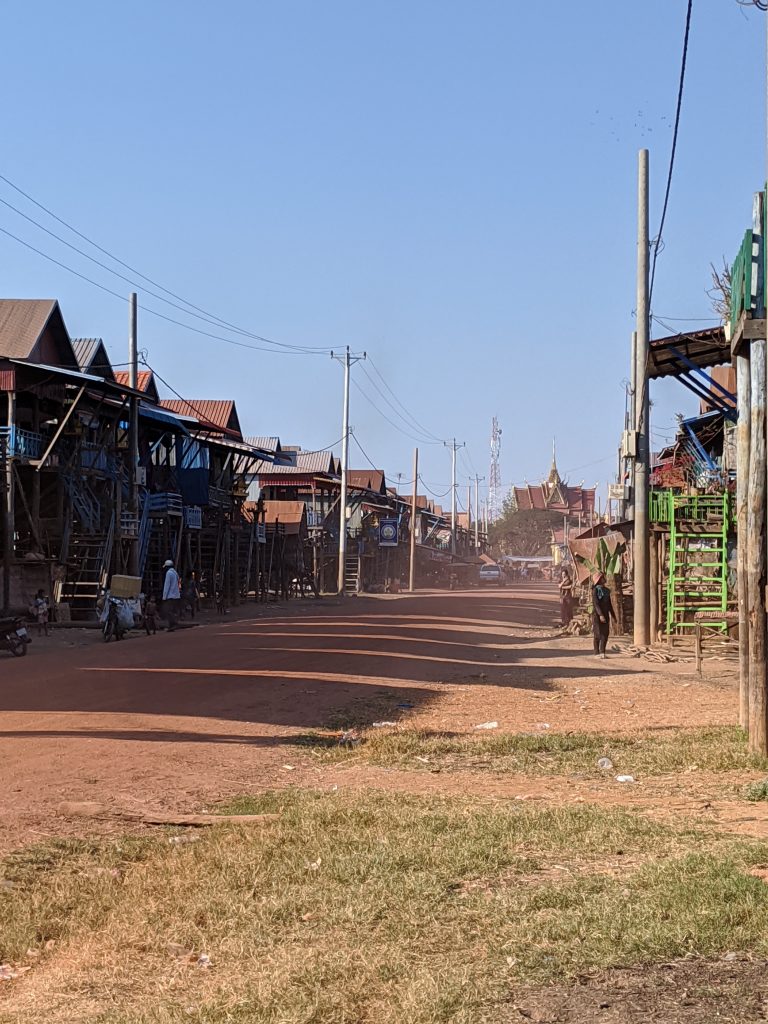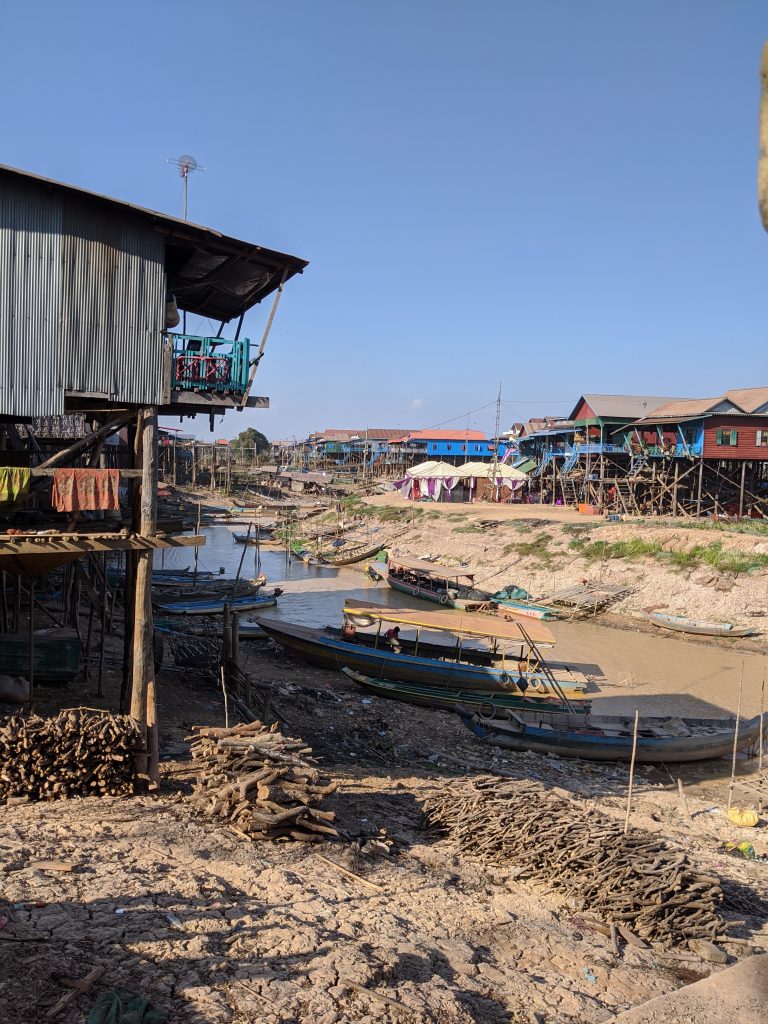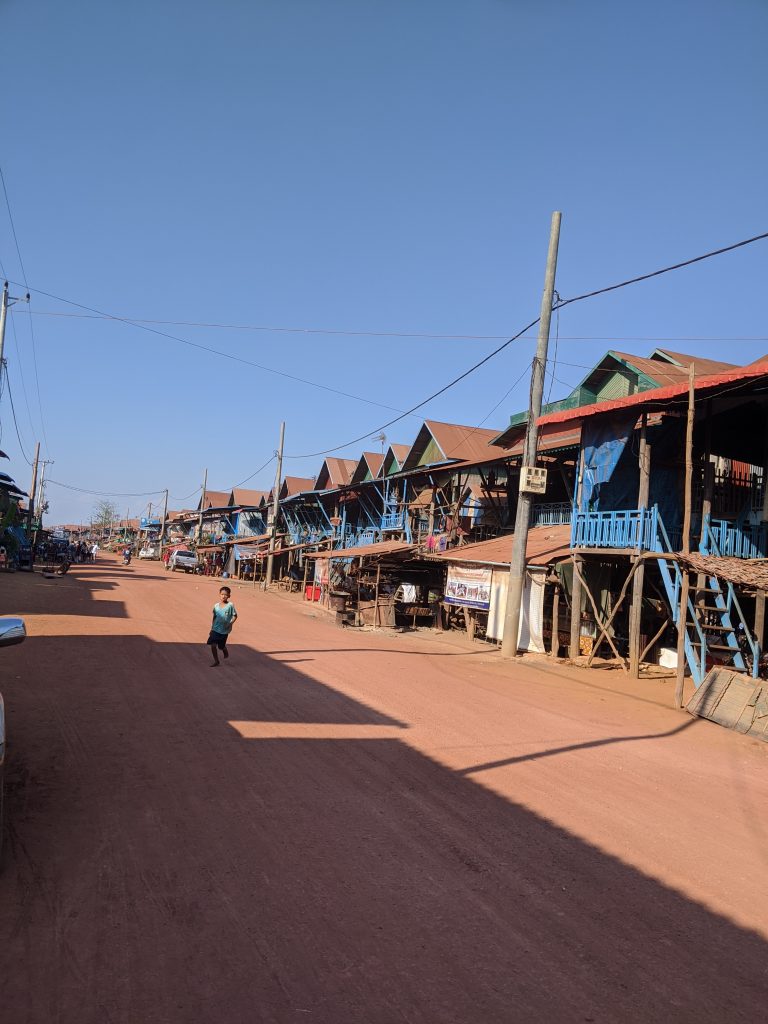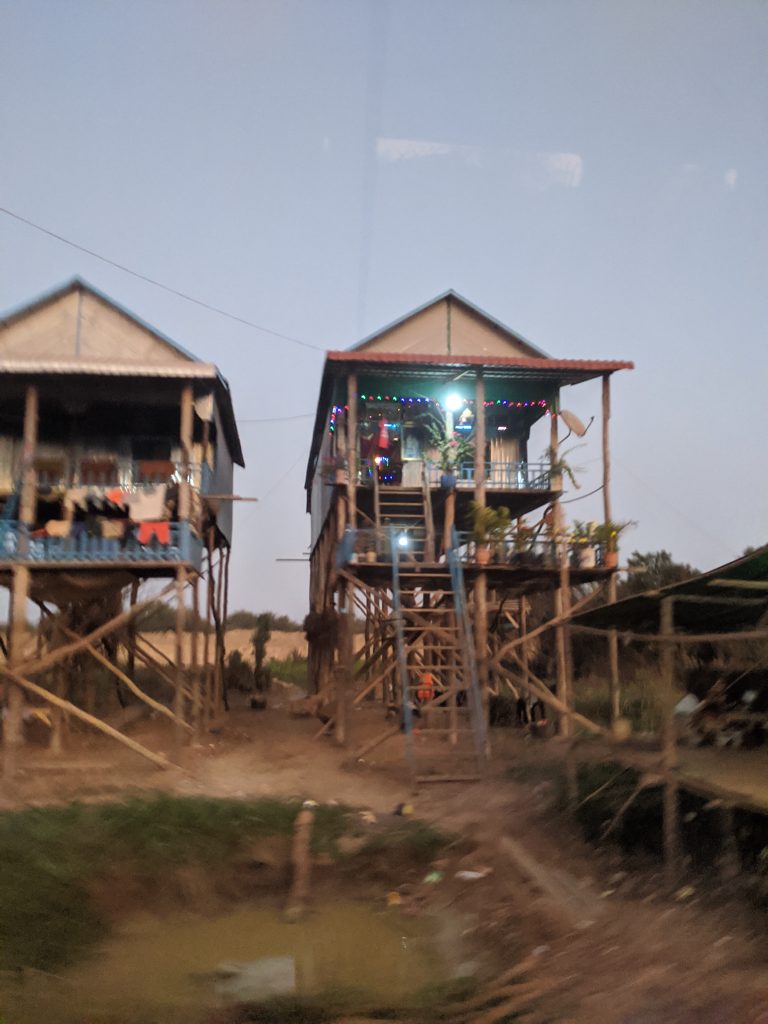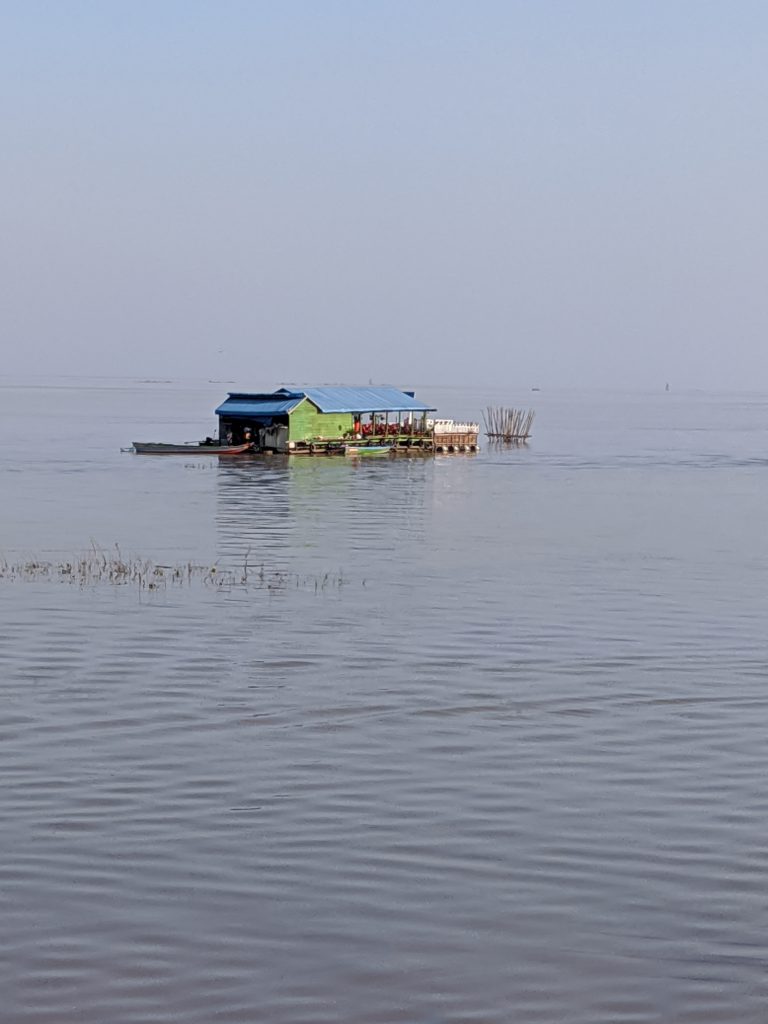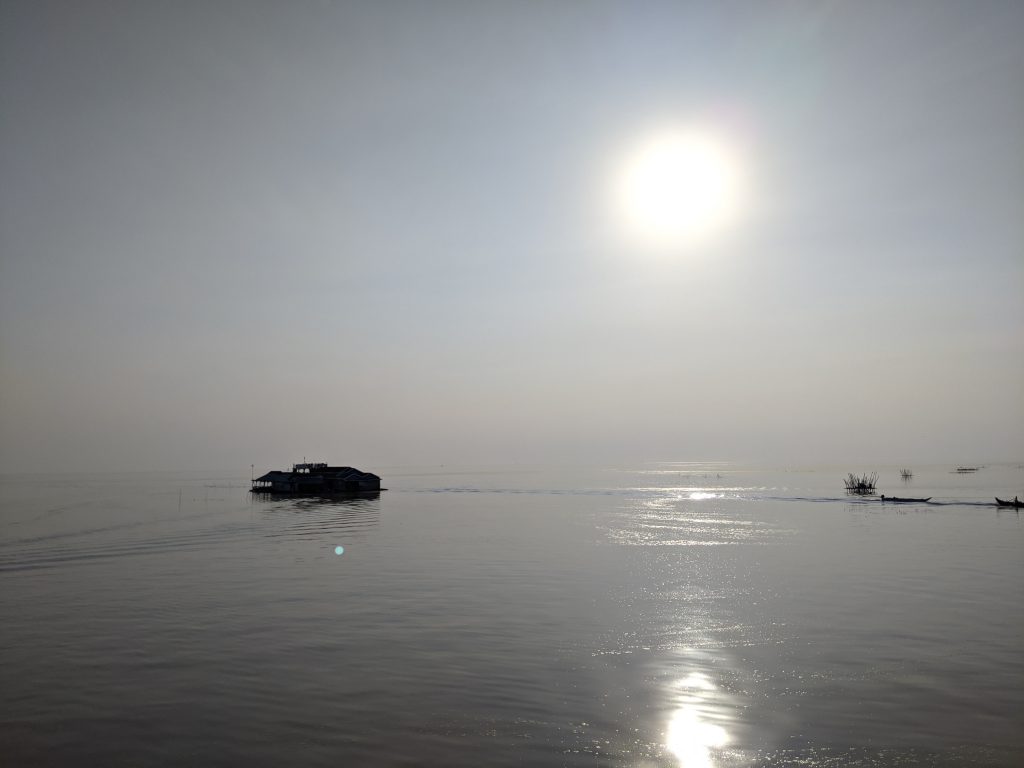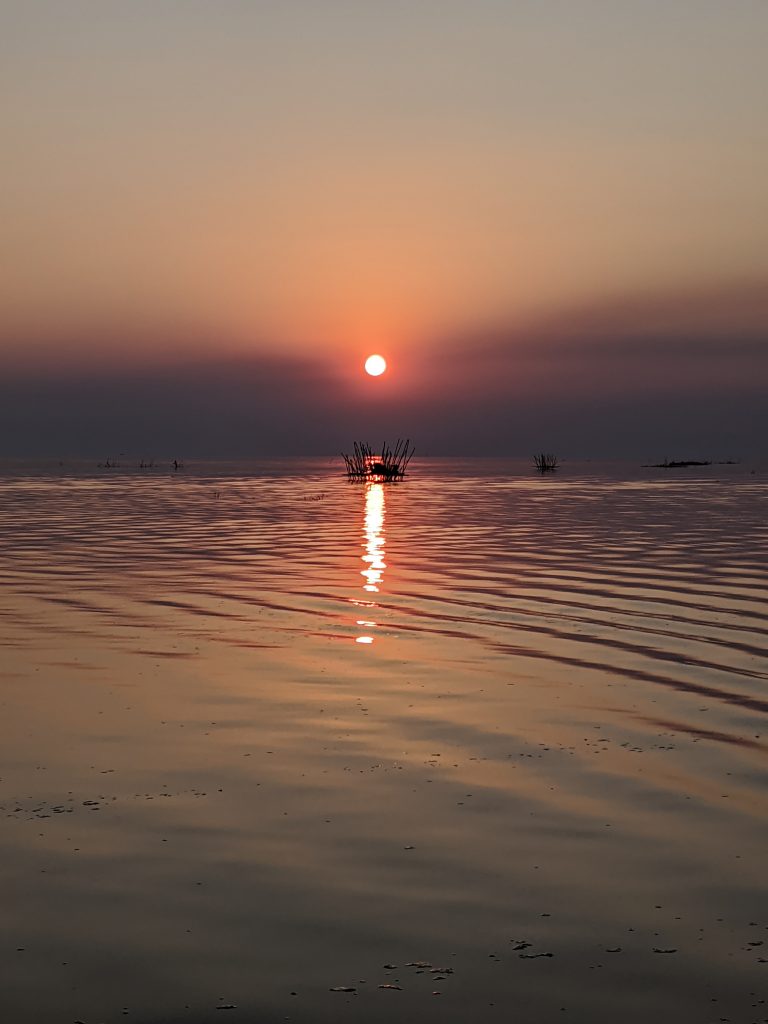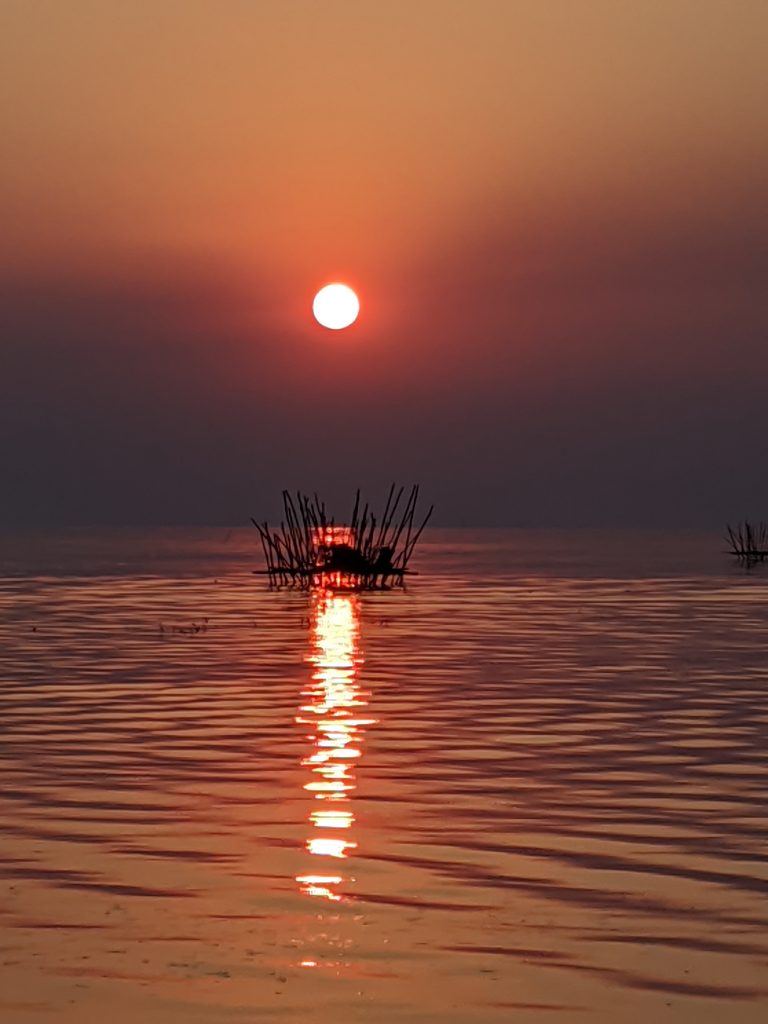After an exhausting forty-eight hours in Phnom Penh, I was grateful to kick back and sleep on the six-hour bus ride to Siem Reap. The city is much smaller than Phnom Penh but easily walkable and far more relaxed. After my long bus nap, I took a breezy tuk-tuk to my hostel.
I stayed in Onederz hostel during my time there, which I bring up because I had a phenomenal time. I only stayed a few days as coronavirus was becoming a real threat to cutting my trip short, but I could have stayed here for weeks. The lodging was cozy, the food and smoothies were incredible, and I found it a popular stay for young people looking to work remotely in a new and interesting place. It’s very close to Pub Street and the night market, and I met a lot of wonderful people during my time there. I can’t recommend it enough.
I spent my first full day visiting the crown jewel of Cambodia, Angkor Wat, and the surrounding temples. I arrived bright and early to catch the sun rising behind the grand temple.
Angkor Wat is a Buddhist temple built in the twelfth century and dedicated to Vishnu, ‘The Preserver’ in the Hindu Trinity. It is the largest religious structure in the world, spanning over four hundred acres. It is one of the most important pilgrimage sites for those who practice Buddhism around the world. Its size and beauty speak for themselves, with walls covered in ornate sculptures and carvings, it’s easy to see what makes this an important piece of Cambodian history.
Thankfully the temple was spared much of the war carnage that damaged or destroyed many important monuments throughout the country. Normally, it is overrun by tourists with over three million people visiting each year. Coronavirus has severely impacted these numbers, and there were very few people wandering around the temples during my time there—great for me, not so great for the Cambodian economy.
There are many other temples scattered around the area of Angkor. One of the most iconic and recognizable of these is Bayon Temple, most notable for the large, smiling stone faces that grace the towers of the upper terrace. It is believed to have been built in the late twelfth or early thirteenth century and is surrounded by dense jungle on all sides.
My personal favorite and perhaps the most photographic temple in Angkor is Ta Prohm. The temple has been reclaimed by nature, with large trees growing out of the temple, roots winding wildly throughout the stone bricks. You’ll probably recognize it if you watched the original Tomb Raider movie, and it’s easy to see why. The temple’s wild nature is impossible to forget.
The last temple of the day was Banteay Kdei, or ‘Citadel of Chambers’. The temple is the least preserved of the temples in Angkor, and this is what really makes it worth a visit. Trees and moss overrun this dilapidated temple and old sandstone bricks litter the site where walls used to stand. I really felt like I was wandering through an ancient ruin in a video game.
My final destination in Siem Reap was the Floating Village on Tonle Sap Lake. Unfortunately, I didn’t realize it was the dry season when I added this to the list, so there wasn’t a lot of “floating” in this floating village. During the dry season, the village is mostly walkable. During the wet season, the lake rises to make boats the only form of transportation to school, work, etc. However, the lake holds less and less water as a result of climate change, which is now threatening the economy and ecosystem of this region as the water levels fall each year. National Geographic has a great article talking about the impacts both climate change and now COVID-19 have had on this region.
Still, some of the flooded forest remains, and I was still able to go out on a boat to see what floating structures exist during the dry season. The boat ride and the sunset did not disappoint.
I loved my experience in Siem Reap and I wish I had more time to explore the rest of the country, especially the more isolated areas along the coastline. Alas, it was time to move on and I readied myself for another long bus ride – this time to Bangkok, Thailand.

